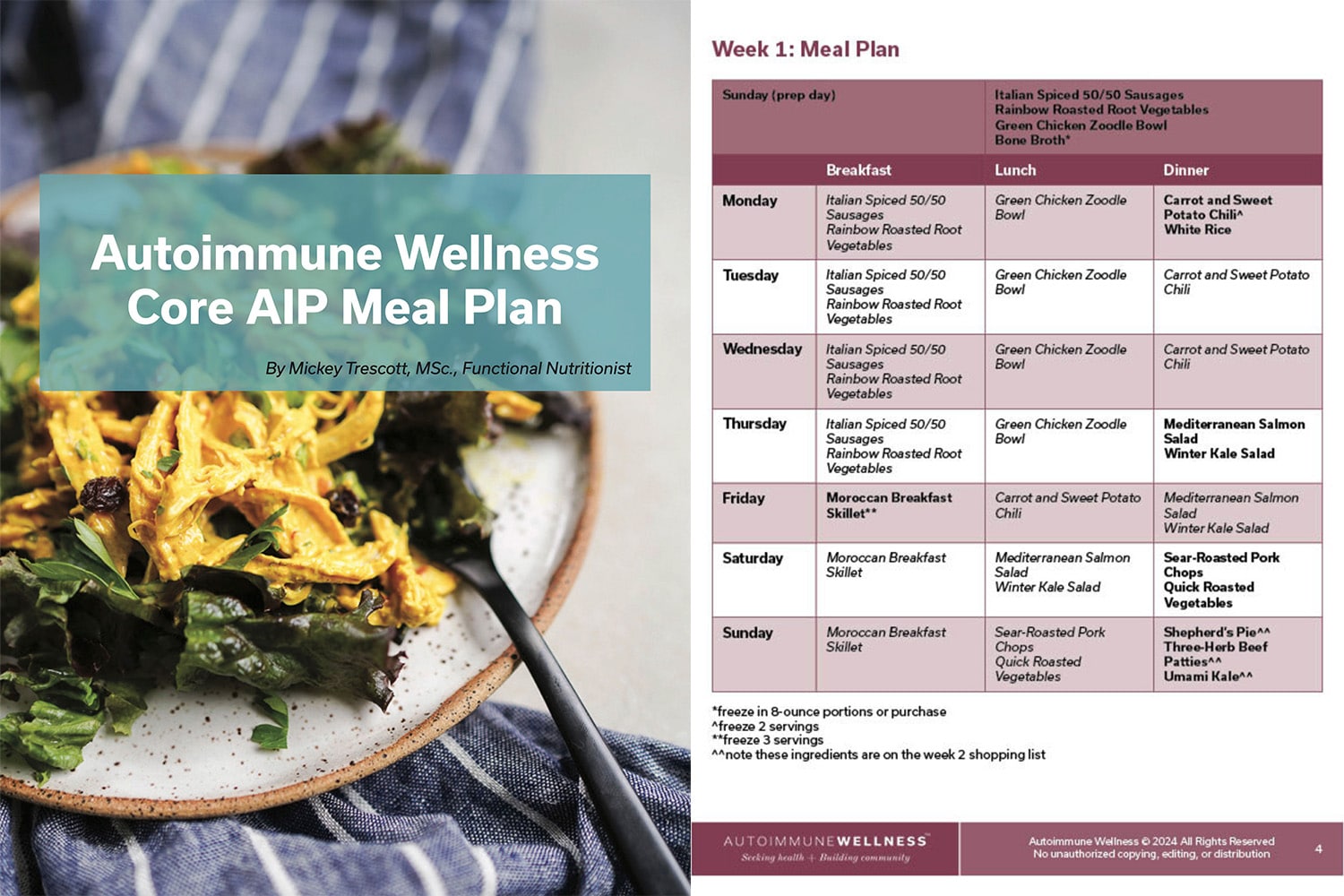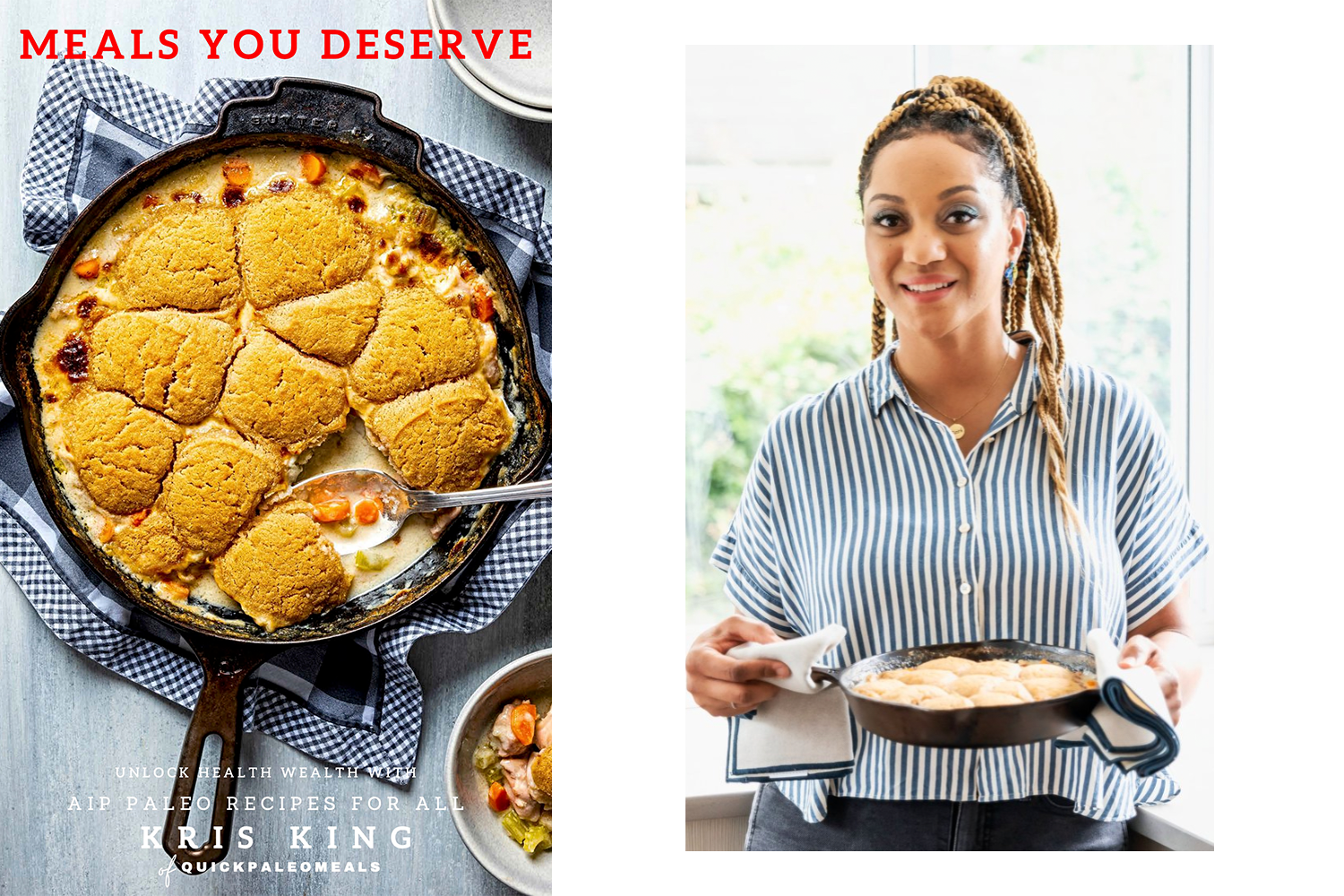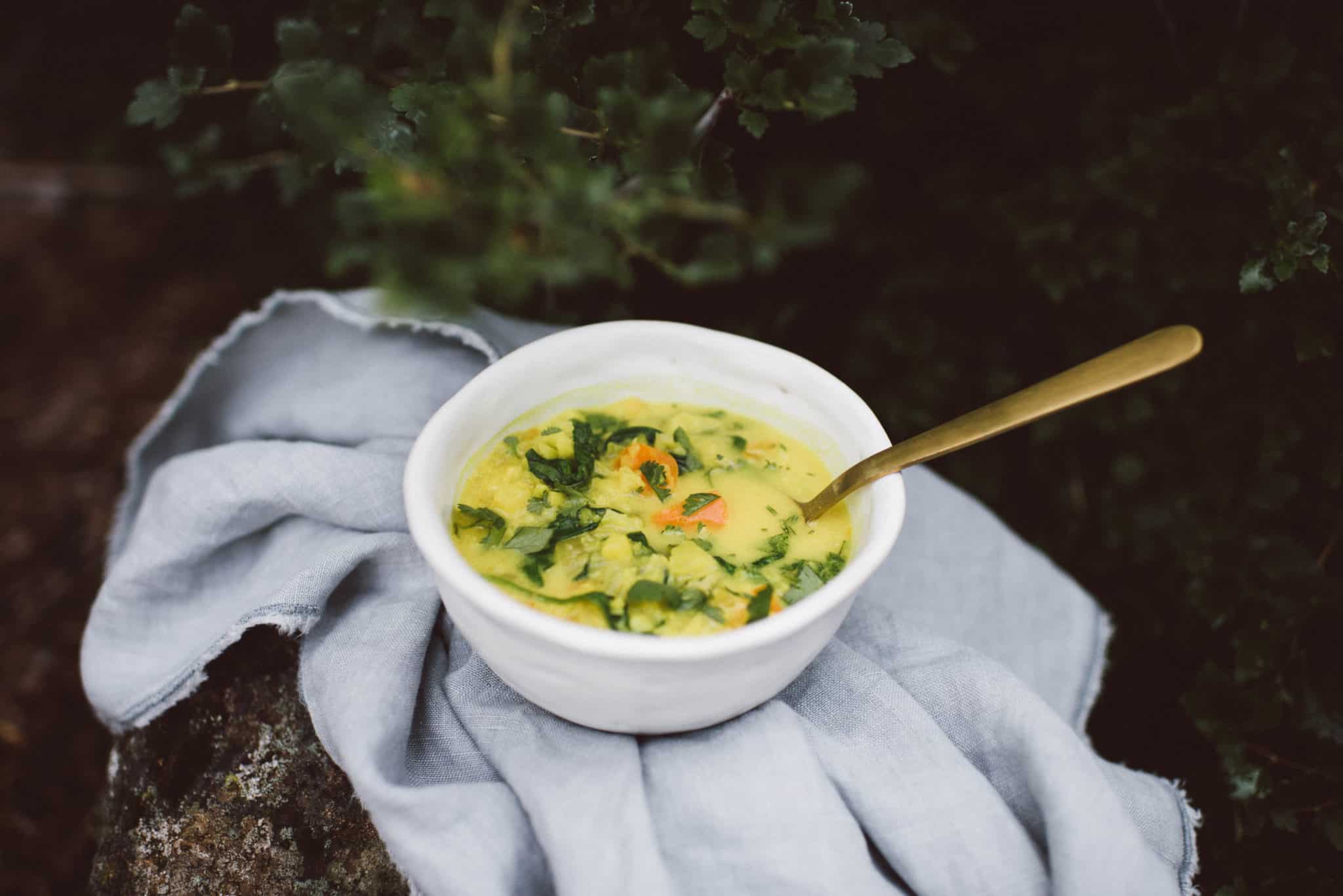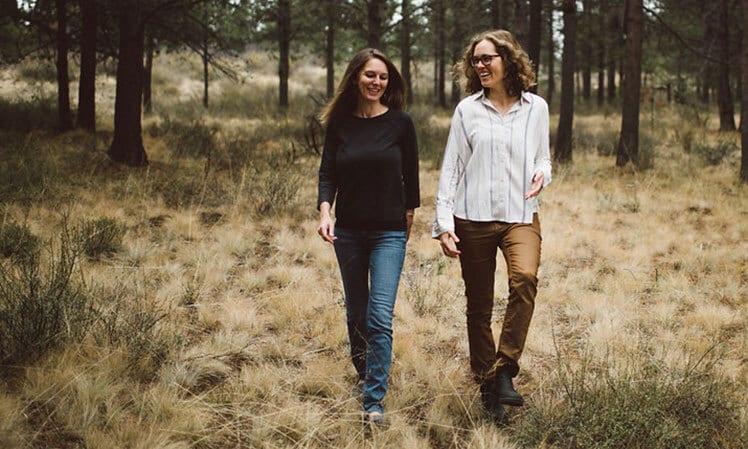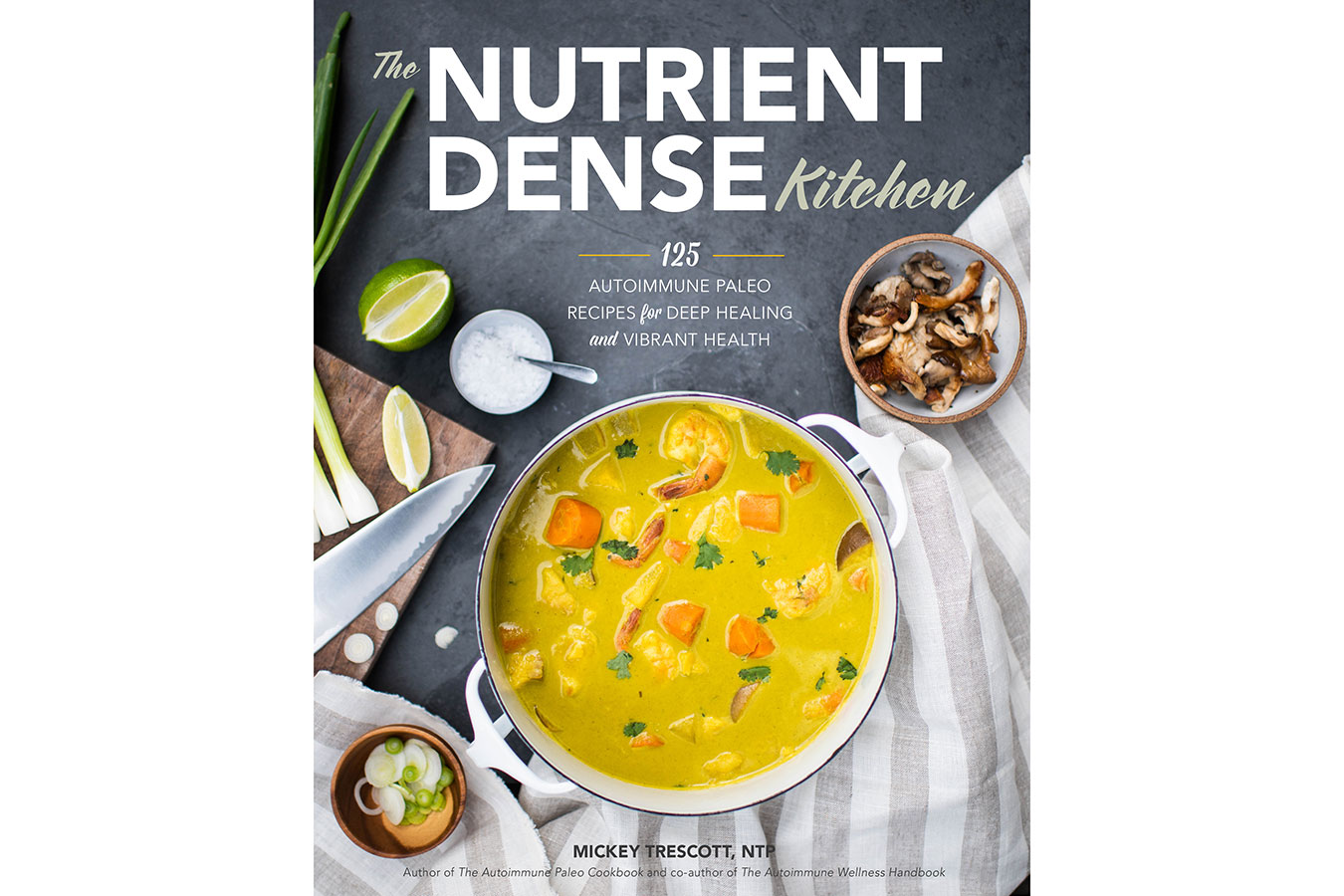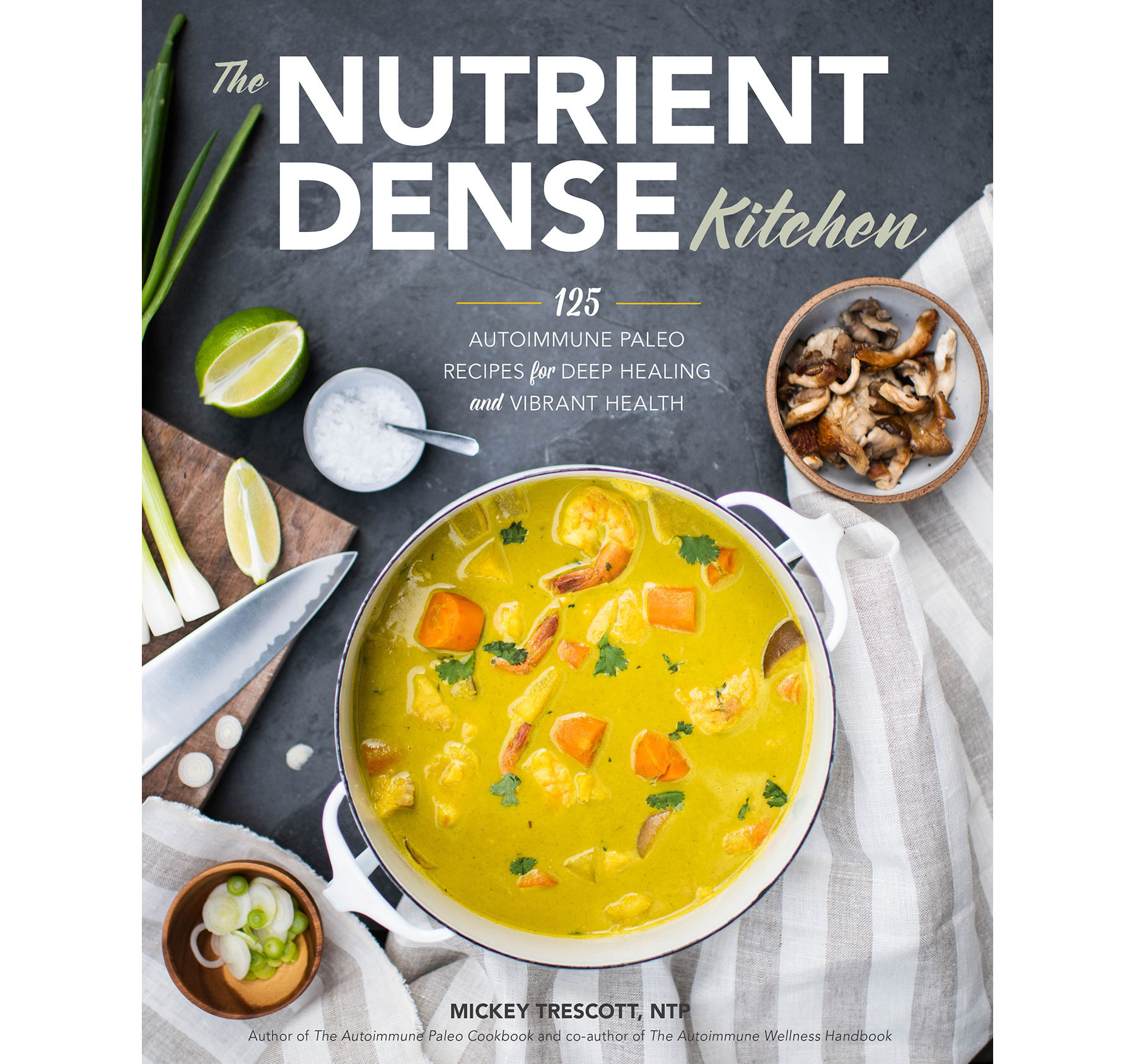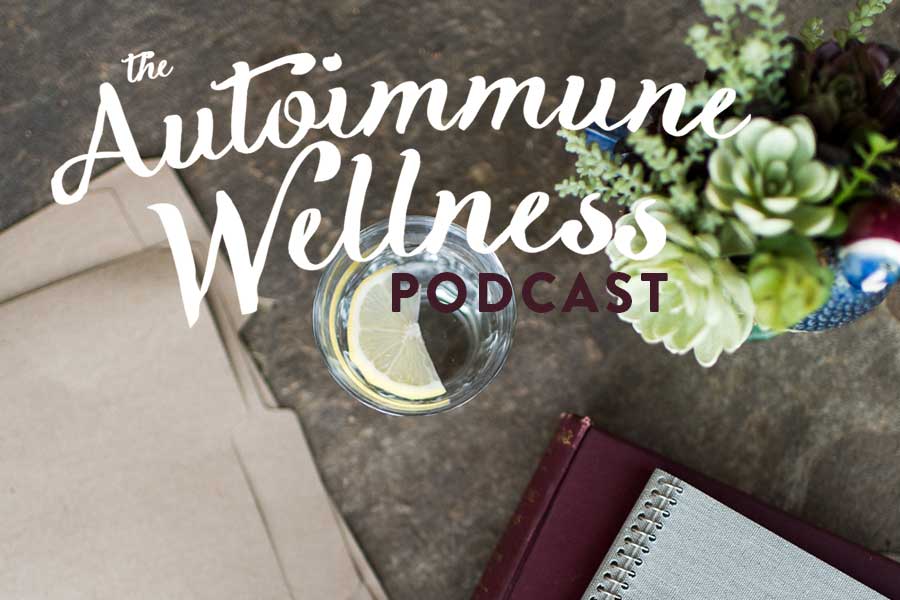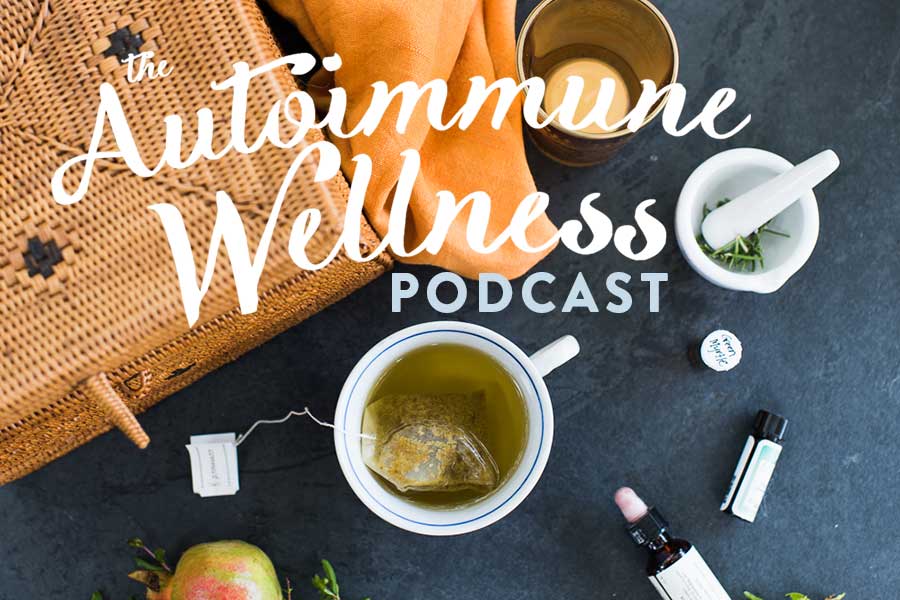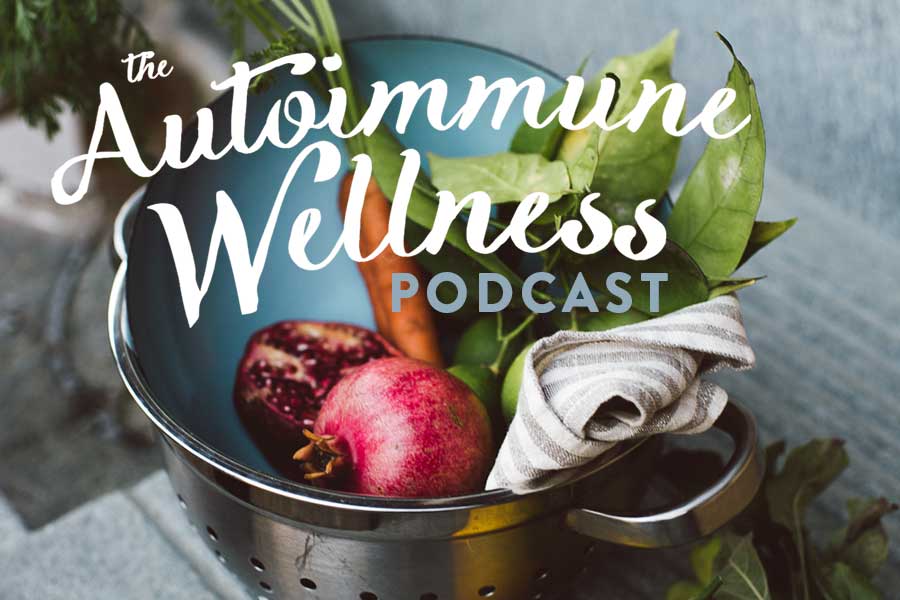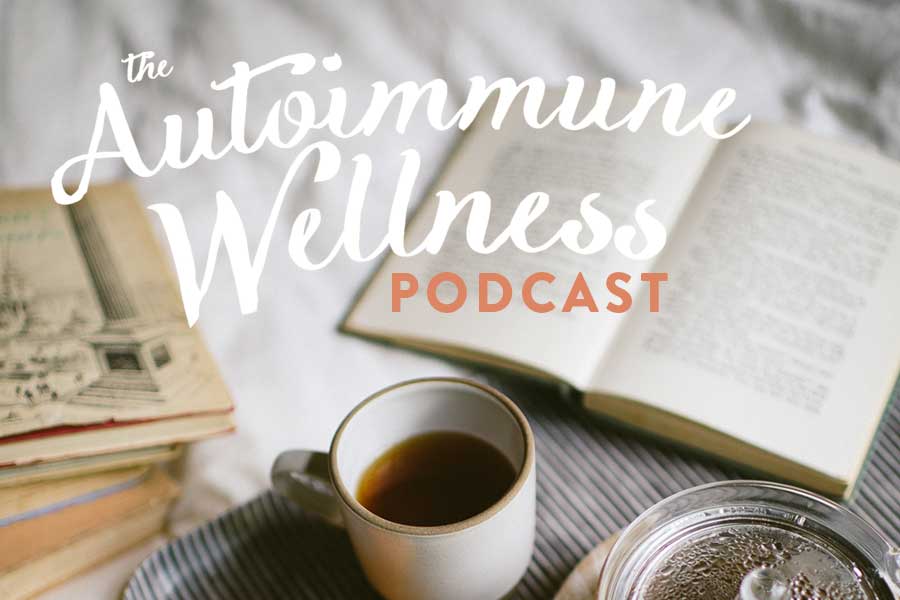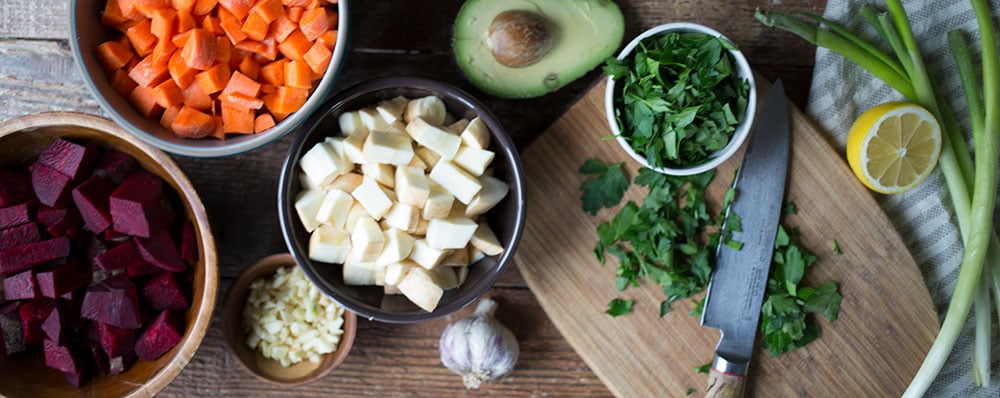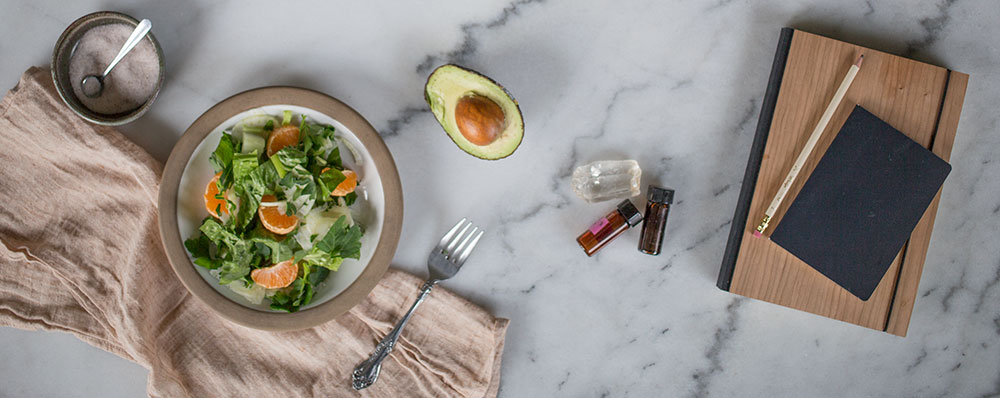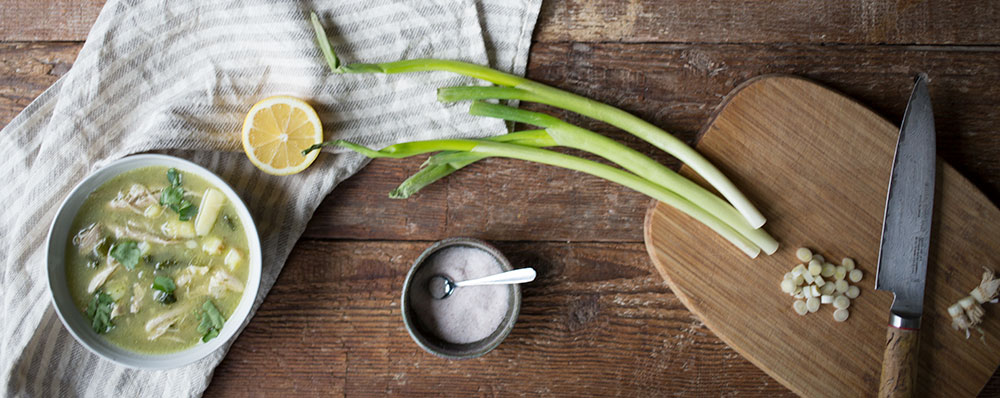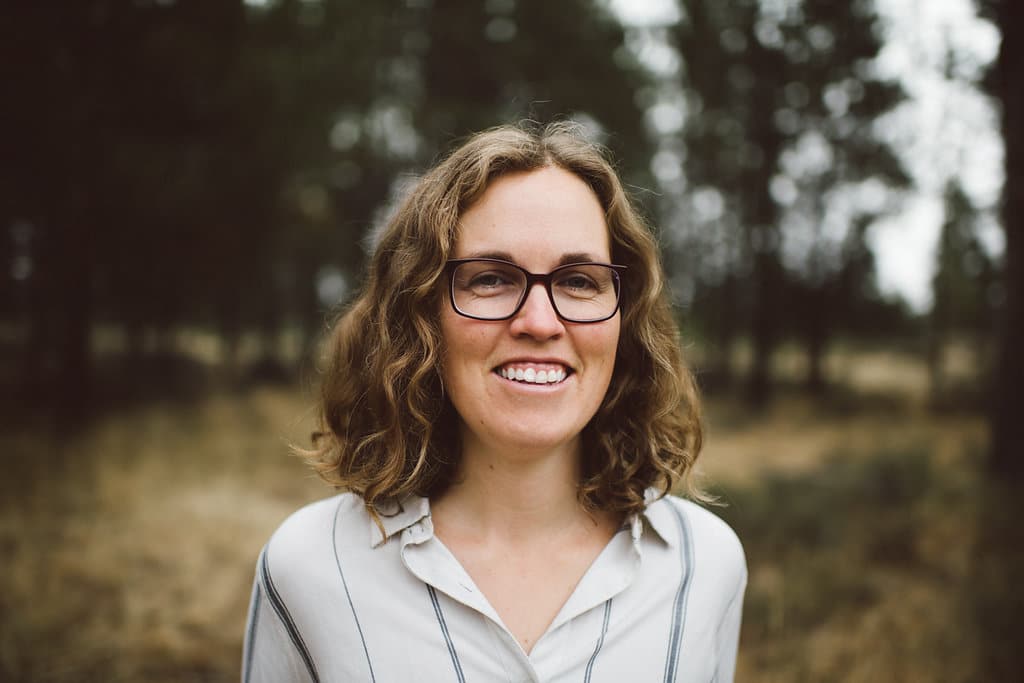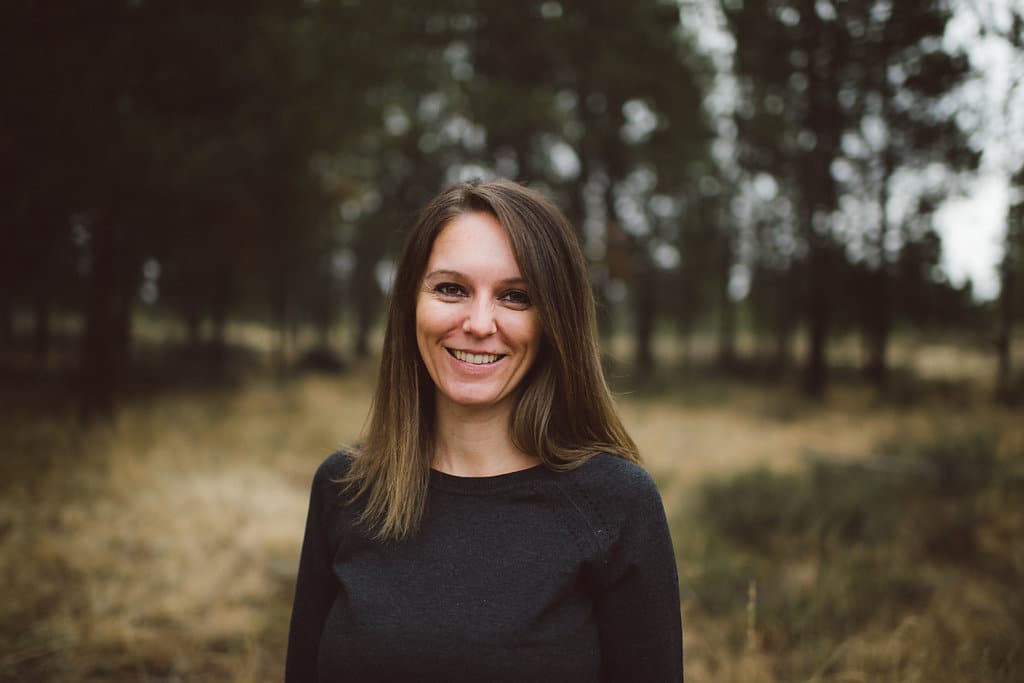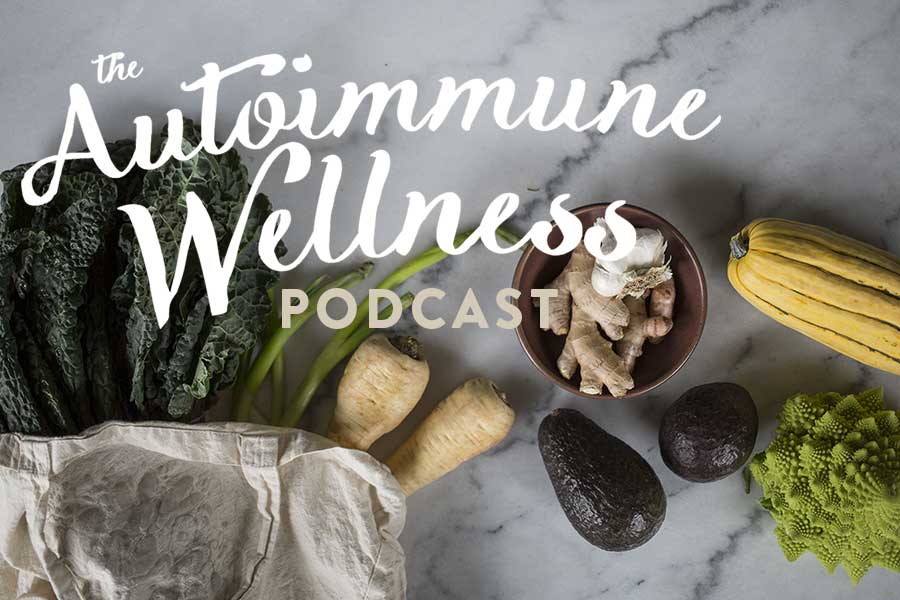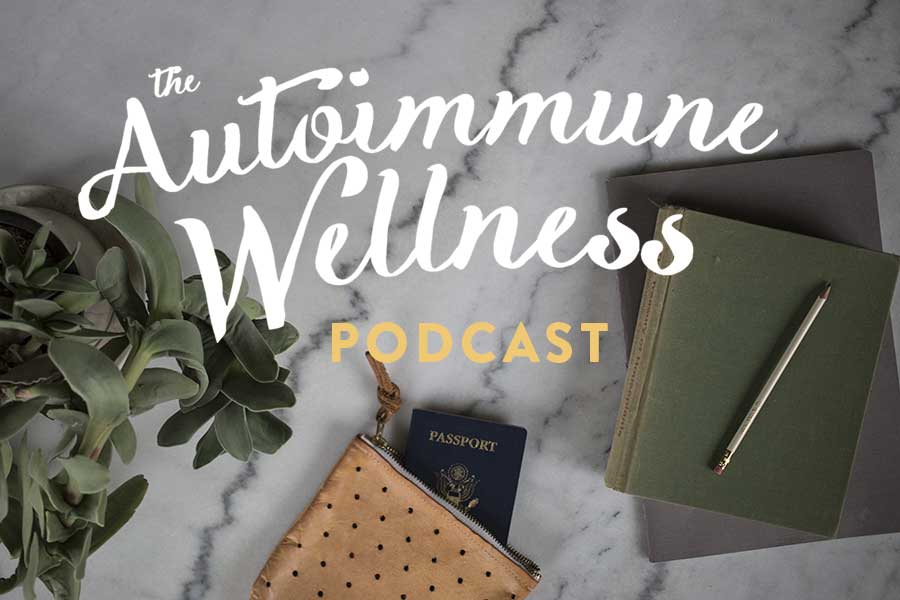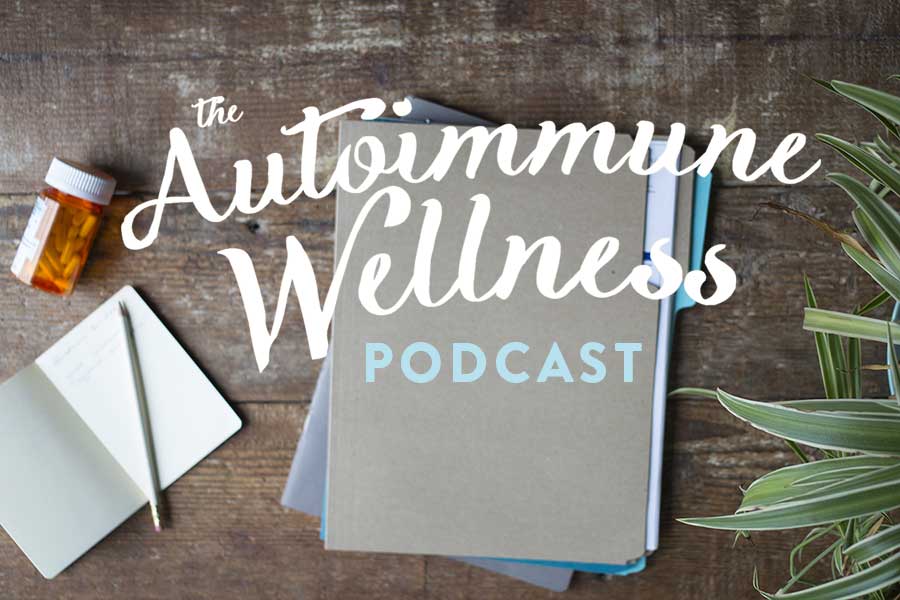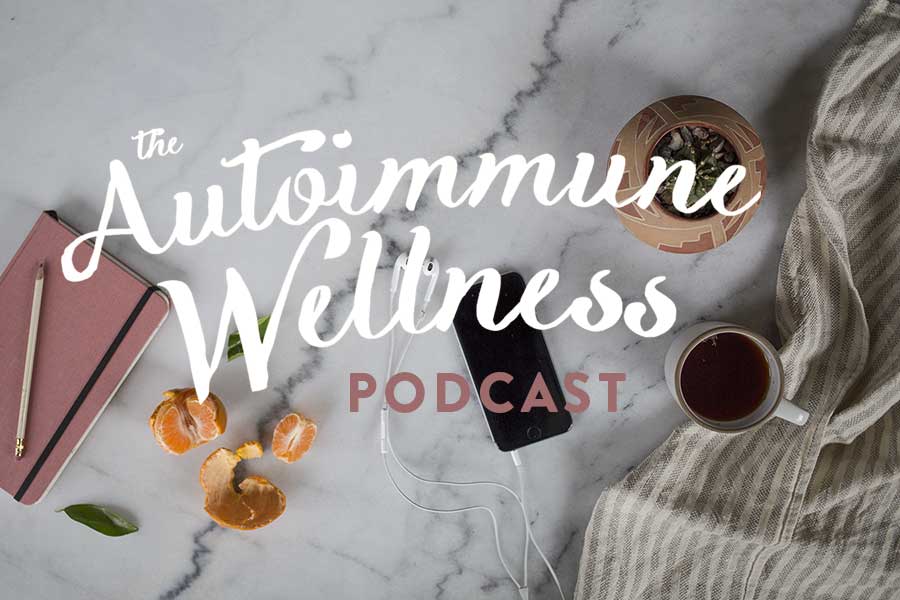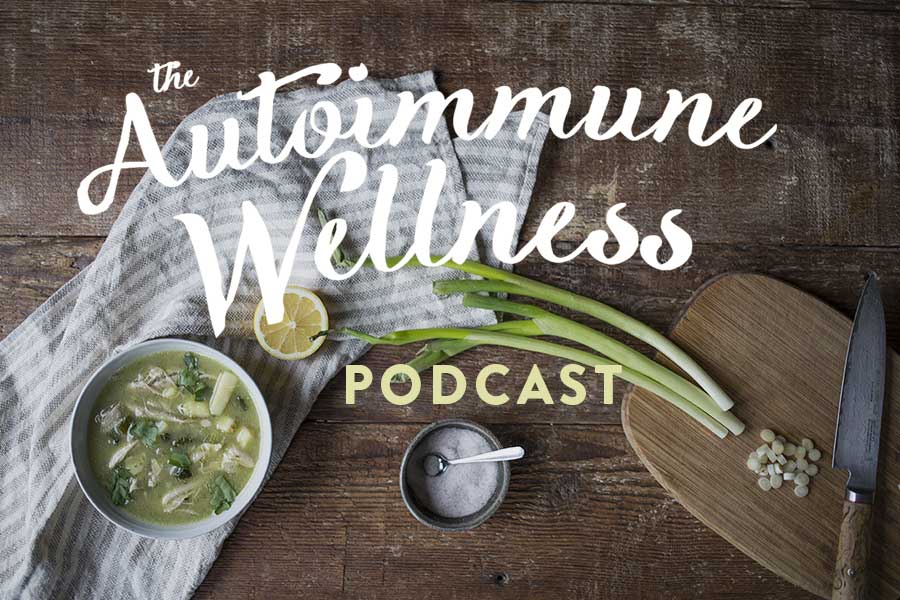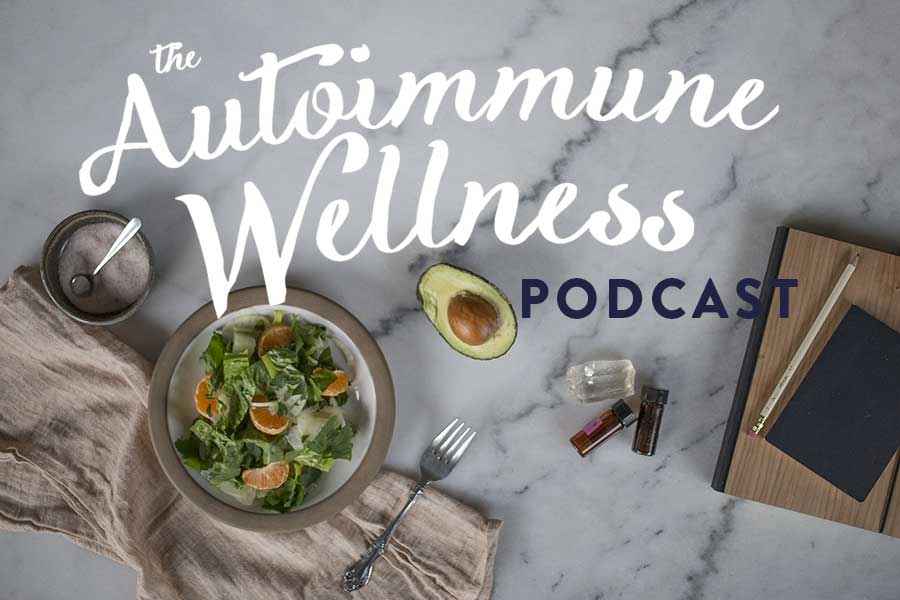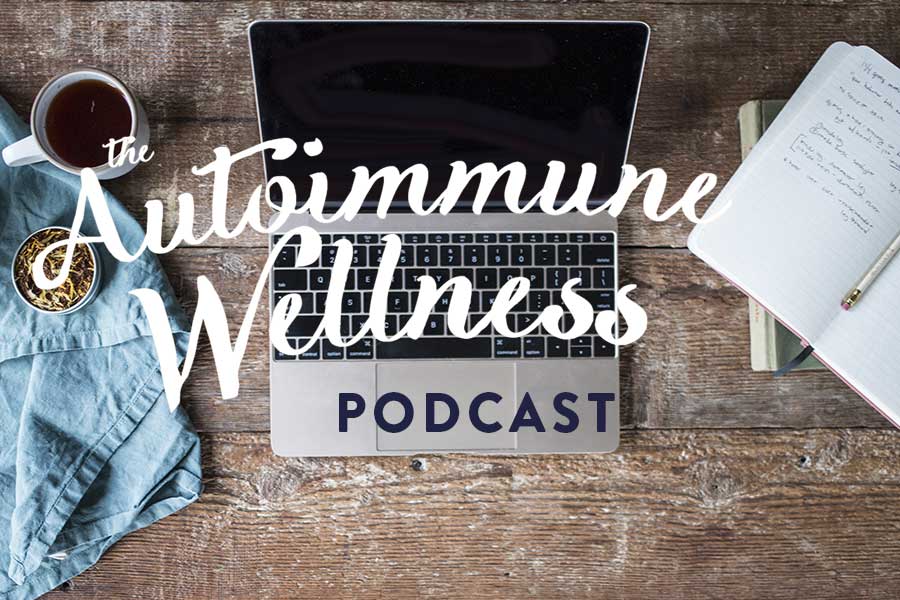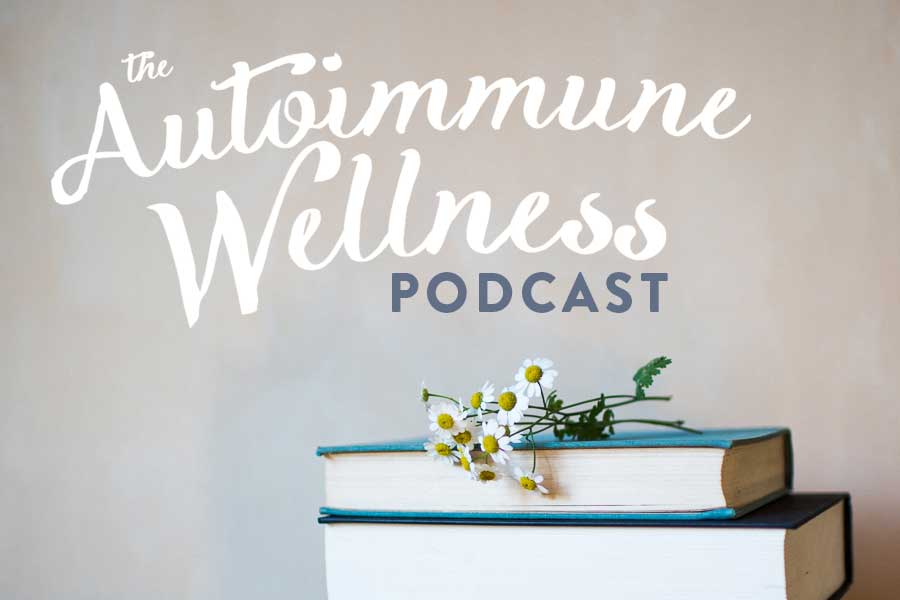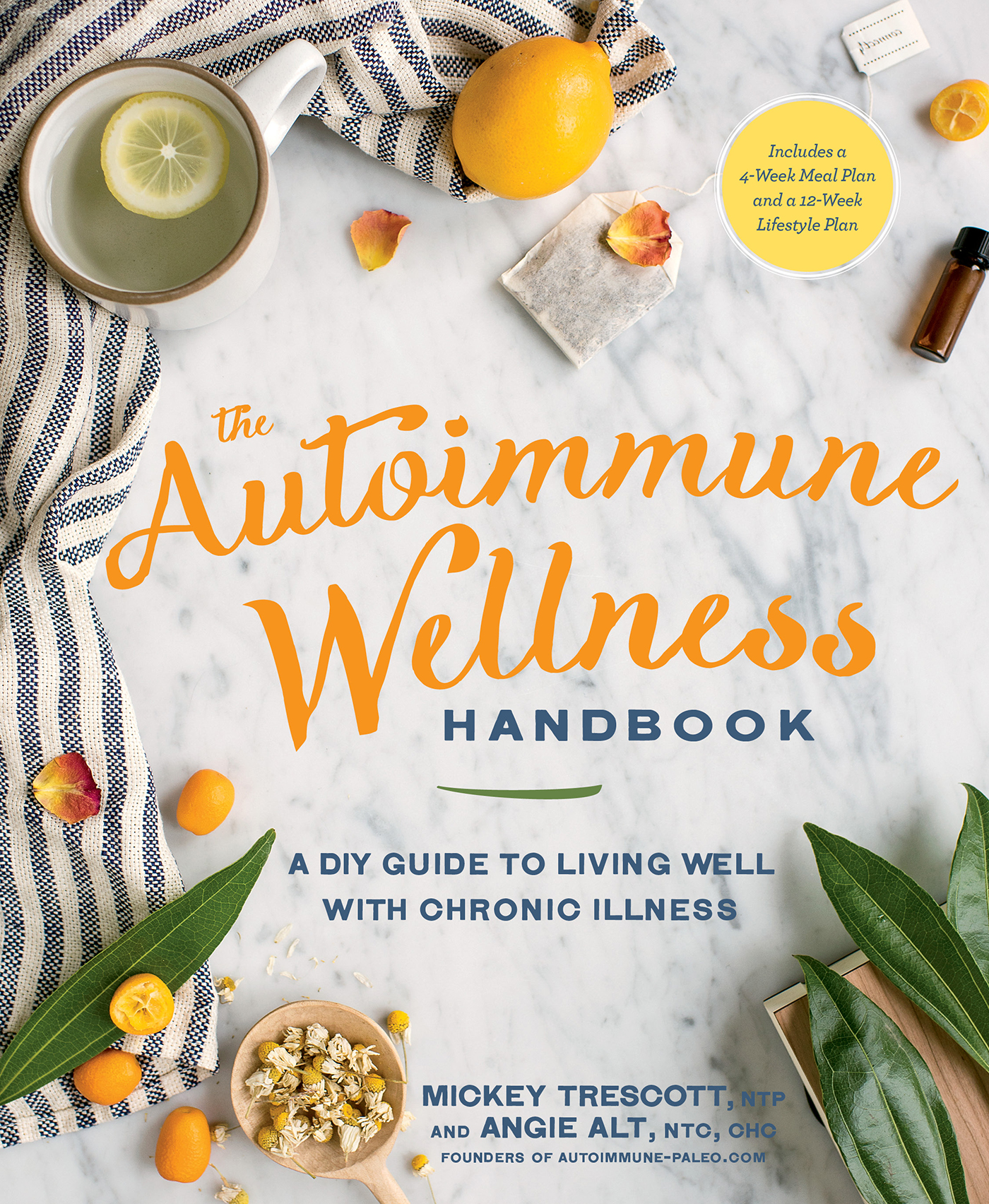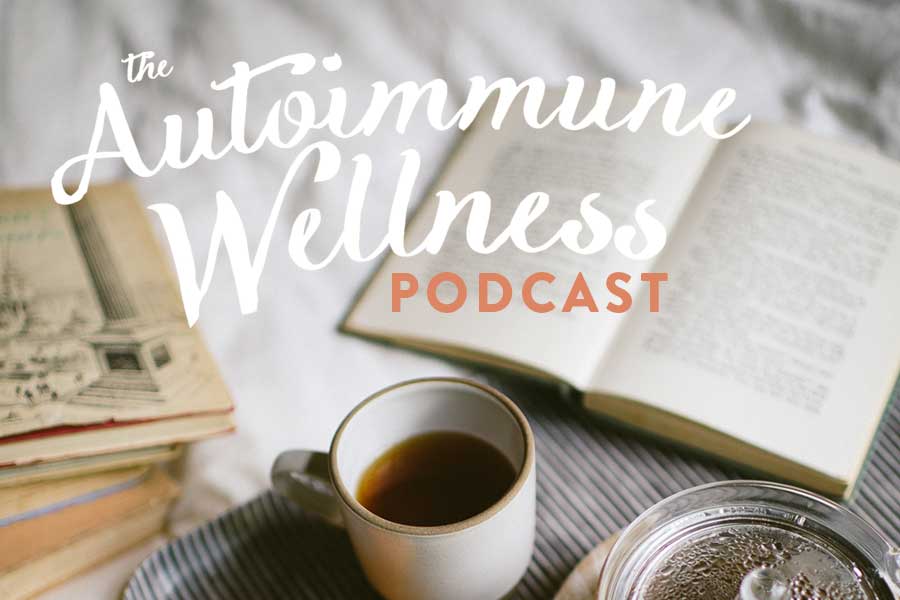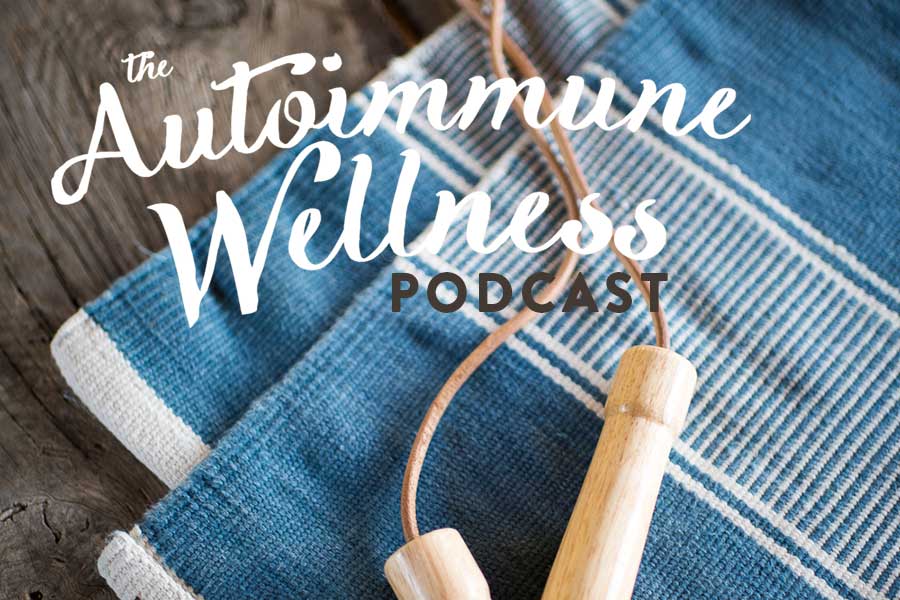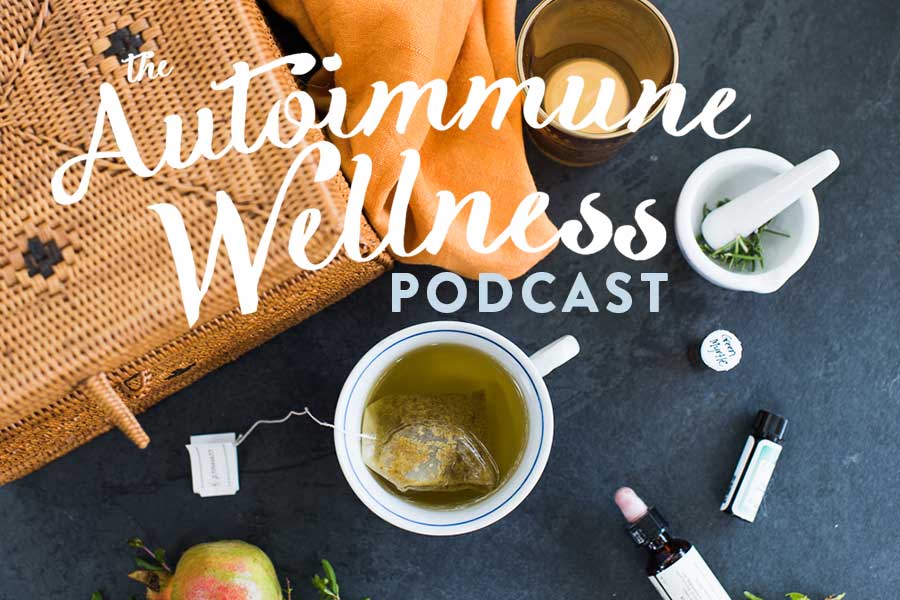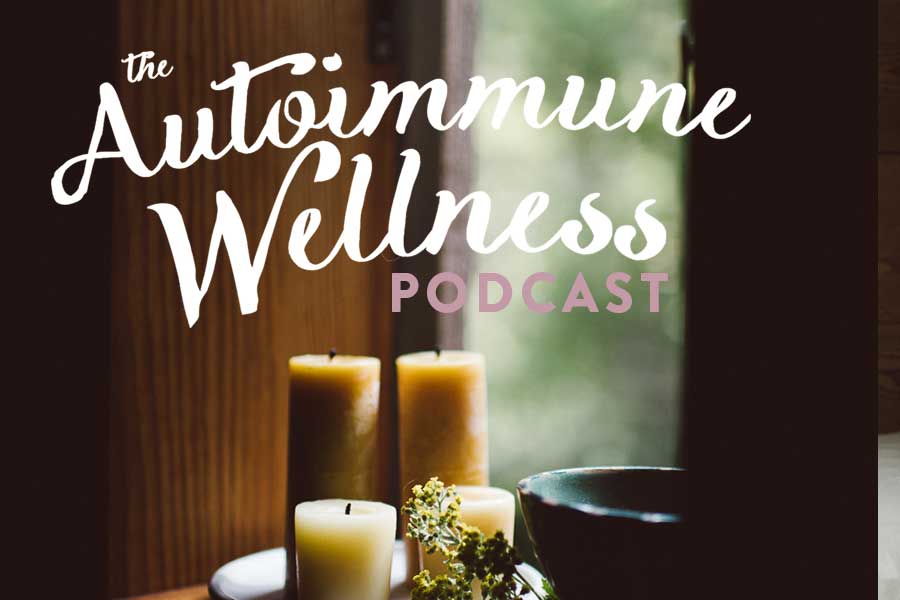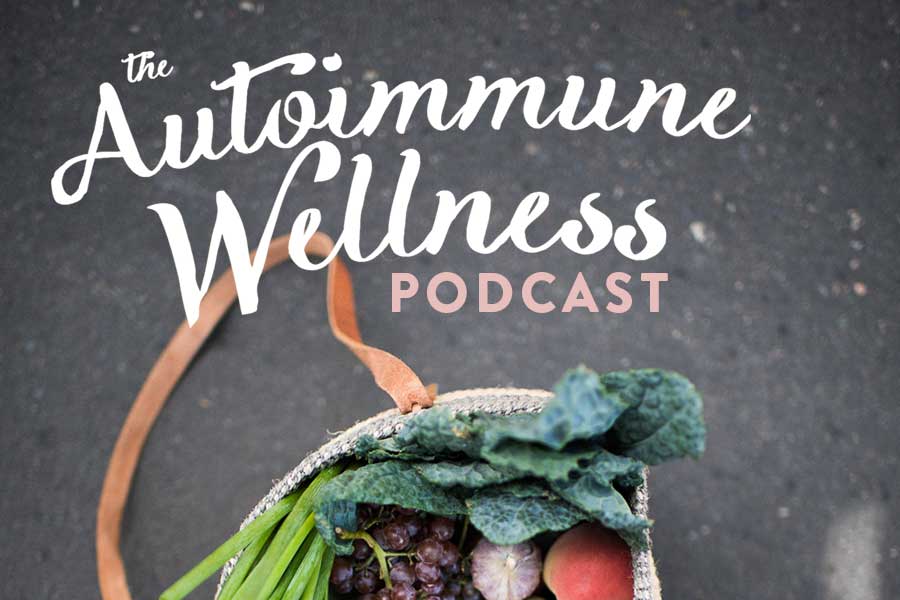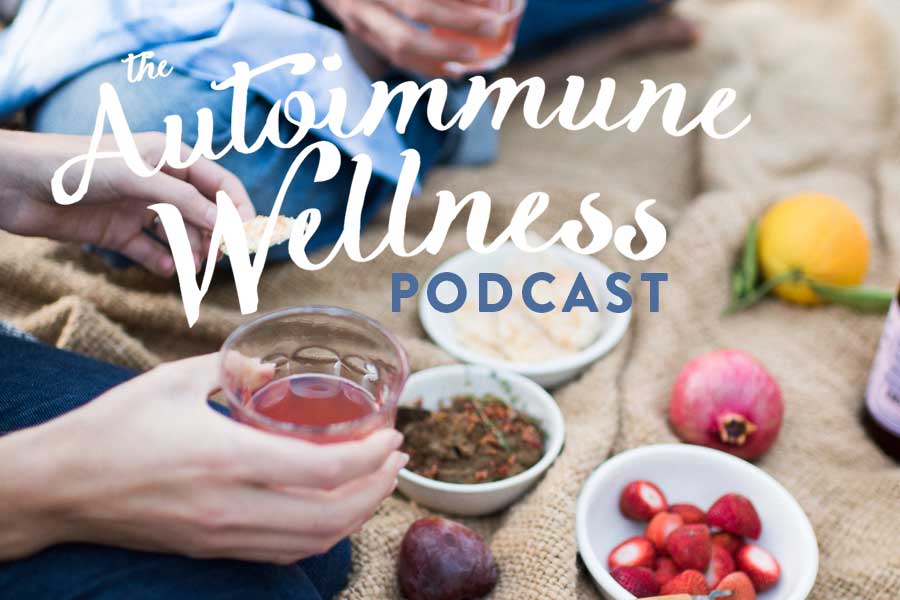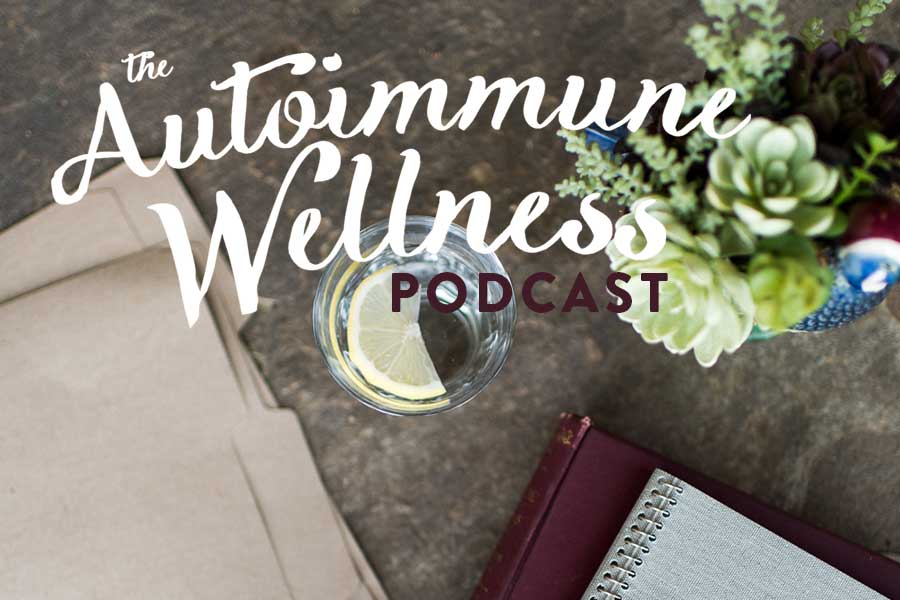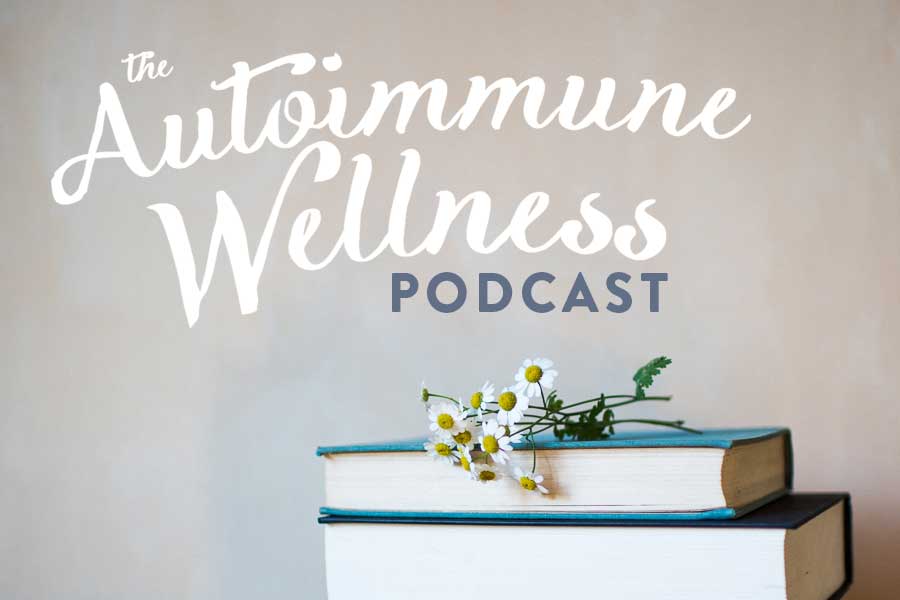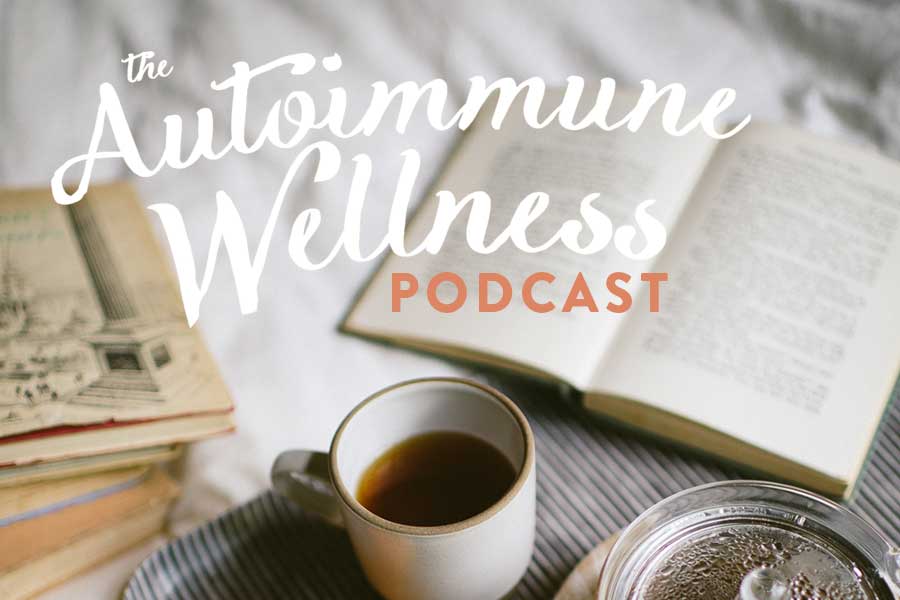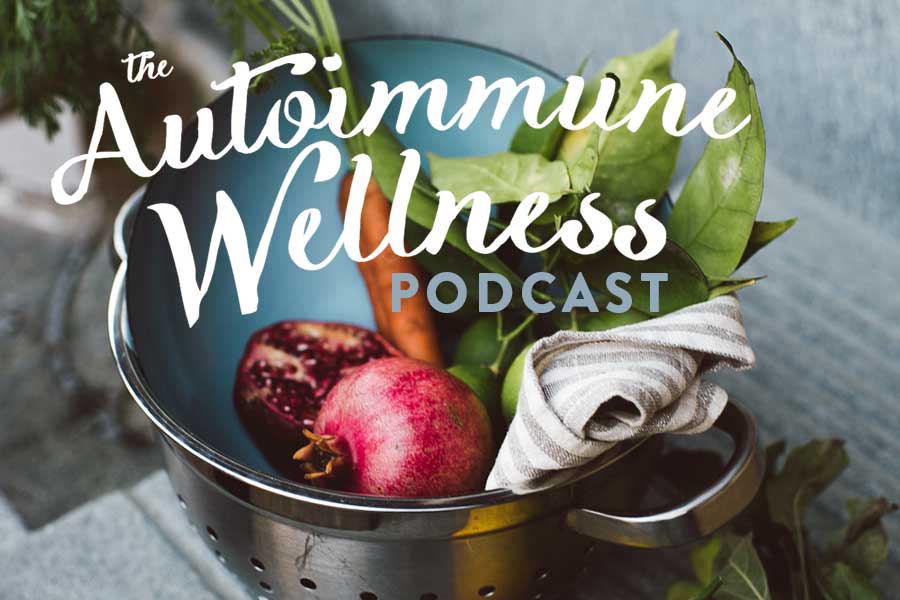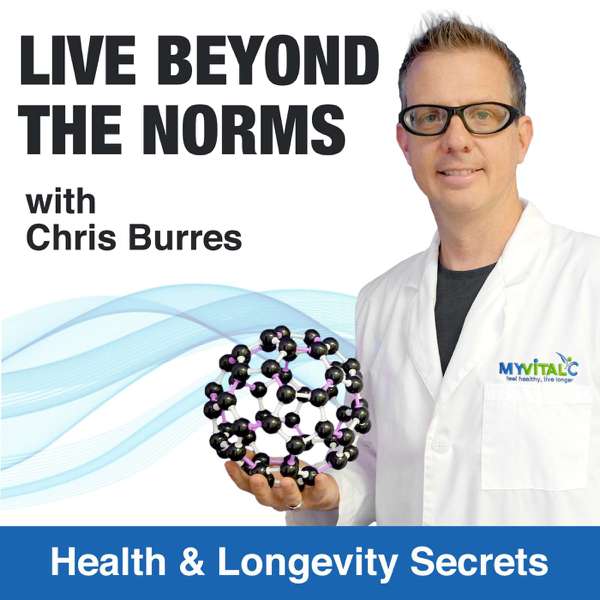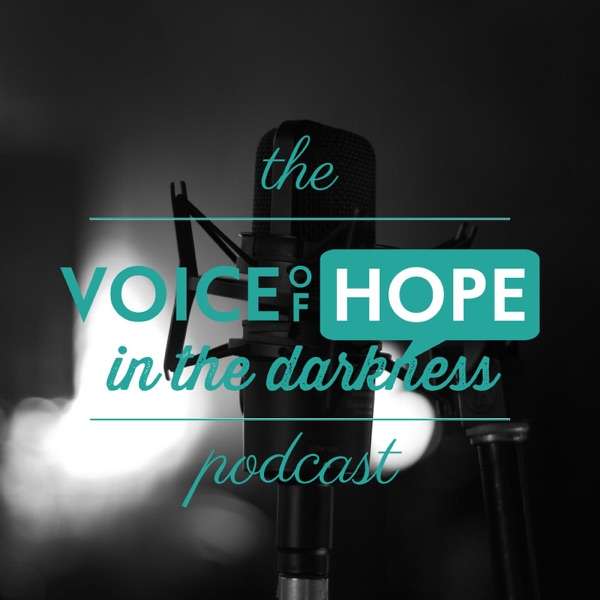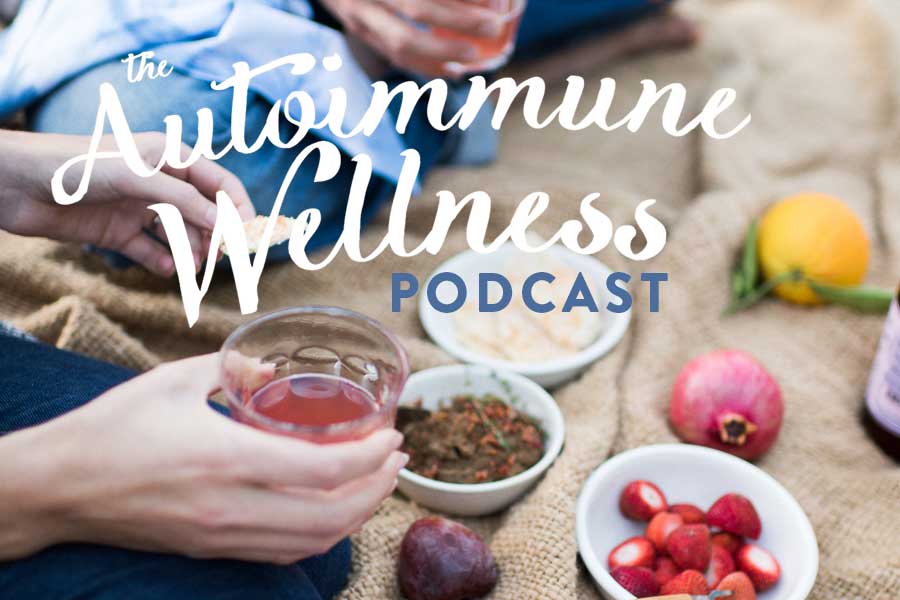

Welcome to The Autoimmune Wellness Podcast Season 3: Real Food on a Budget. We’re dedicating this season to discussing an aspect of natural healing that often gets left out of the conversation: affordability. We’ll be chatting with experts and peers from the AIP community about how to best balance money with your health priorities.
This season is brought to you by our title sponsor, The Nutritional Therapy Association (NTA), a holistic nutrition school that trains and certifies nutritional therapy practitioners and consultants with an emphasis on bioindividual nutrition. Learn more about them by visiting NutritionalTherapy.com, or read about our experiences going through their NTP and NTC programs in our comparison article.
Season 3 Episode 2 is all about how to implement some kitchen hacks to help you save money on food. We discuss our personal best practices when it comes to getting food on the table affordably, the first of which is meal planning. Some of you have heard us chat about these topics before, but just stick with us, because you may not have looked at the benefits from this angle before.
Then, we chat with Alaena Haber of Grazed and Enthused about her favorite AIP kitchen tools and how she sets herself up for success in an AIP kitchen. Scroll down for the full episode transcript!
How to listen:
If you’d like to have our podcasts sent directly to your device, subscribe in iTunes or Stitcher!
If you’d like to download the .mp3, you can do so by following this link.
If you’d like to play the episode right now in your browser, use the player below!
Full Transcript:
Mickey Trescott: Welcome to the Autoimmune Wellness podcast, a resource for those seeking to live well with chronic illness. I’m Mickey Trescott, a nutritional therapy practitioner living well with autoimmune disease in Oregon. I’m the author of The Autoimmune Paleo Cookbook, and I’m using diet and lifestyle to best manage both Hashimoto’s and Celiac disease.
Angie Alt: And I’m Angie Alt. I’m a certified health coach and nutritional therapy consultant, also living well with autoimmune disease in Maryland. I’m the author of The Alternative Autoimmune Cookbook, and I’m using diet and lifestyle to best manage my endometriosis, lichen sclerosis, and Celiac disease.
After recovering our health by combining the best of conventional medicine with effective and natural dietary and lifestyle interventions, Mickey and I started blogging at www.AutoimmuneWellness.com, where our collective mission is seeking wellness and building community.
We also wrote a book called The Autoimmune Wellness Handbook together that serves as a do-it-yourself guidebook to living well with chronic illness.
Mickey Trescott: If you’re looking for more information about the autoimmune protocol, make sure to sign up for our newsletter at autoimmunewellness.com, so we can send you our free quick start guide. It contains printable AIP food lists, a 2-week food plan, a 90-minute batch cooking video, a mindset video, and food reintroduction guides.
This season of the podcast, real food on a budget is brought to you by our title sponsor, The Nutritional Therapy Association.
Angie Alt: A quick disclaimer: The content in this podcast is intended as general information only, and is not to be substituted for medical advice, diagnosis, or treatment. Onto the podcast!
Topics:
1. The benefits of meal planning [1:40]
2. All about batch cooking [14:59]
3. How Mickey and Angie implement meal planning and batch cooking [26:20]
4. Guest interview, Alaena Haber: AIP kitchen tools [33:14]
5. Setting up your AIP kitchen [40:15]
6. Alaena’s favorite batch cooked AIP recipes [43:10]
7. Myth busting about an AIP blogger’s pantry [45:37]
8. How cooking changed with a baby [50:15]
1. The benefits of meal planning [1:40]
Angie Alt: Hi everyone! Angie here. Welcome back to the Autoimmune Wellness podcast, season 3. How are you doing today, Mickey?
Mickey Trescott: I’m doing great. How about you, Angie?
Angie Alt: I’m good. I’m excited to talk about this topic. Today we’re continuing our discussion related to the topic this season, which is real food on a budget. This episode is going to be about how to implement some kitchen hacks to help you save money on food.
Before we even get into sourcing food, we wanted to take a little detour and discuss about some of the best practices that, when used effectively, will really help you in the kitchen. Some of you have heard us chat about these topics before, but just stick with us, because you may not have looked at the benefits from this angle before.
Mickey, there’s a couple of topics here. Let’s start with a biggie; what is meal planning?
Mickey Trescott: Yeah. So meal planning is something that we talk about a lot, but it’s because it really solves a lot of problems. But meal planning is really the act of just sitting down with a pen and paper, or with some software, which we’ll maybe talk about later. Maybe an app on your phone, maybe calendar. And just writing down what you’re going to eat and when.
It maybe for some people seems a little bit obsessive, and a little bit like too much. But honestly, meal planning is something that is going to help you a lot. And we’ll talk about all the benefits to it. But some different ways that you can meal plan are, like I said, you could just sit down with a sheet of paper and you could say; ok, for Monday dinner I’m going to make a roast chicken. For Tuesday dinner, I’m going to make a roast beef. For Wednesday, maybe I’ll try to work in some seafood.
So it can be something really simple, like just planning the major protein and then kind of letting the vegetables fill in as you find certain deals at the farmer’s market, or the grocery store. Or you can actually literally plan every single breakfast, lunch, dinner, and snack through your meal planning exercise.
So you can use different apps to do this. We are really big fans of a service called Real Plans. Which is an online software-based solution that actually has all of our AIP recipes in our books and on our blog as part of their membership plan. And it’s really affordable. And what they do, you plug in kind of all the things that you’re avoiding, or that you’re eating. And then it will kind of randomly generate you a bunch of recipes that you can then plug into different slots. So that’s the most high-tech version of meal planning.
And then the most low tech, which is actually more along the lines of what I do, is just using a pen and paper. Maybe on a calendar. I actually do it often on my calendar on my computer that I use for all my work and my personal things. And then I’ll just have, at the end of the day, roast that chicken. Just so I know; ok, later today, this is what I’m going to do. So logistically, that’s how someone would meal plan. Do you have anything to add about that, Angie?
Angie Alt: Not too much. You kind of covered all the bases. I’m like you at this point. I’ve been meal planning for a really, really long time. Even before I got into the AIP lifestyle. And I just do it super low tech. Pen and paper, kind of boring.
Sometimes I use Real Plans, because it’s a cool tool and I like playing around with it from time to time. But I usually keep it pretty simple.
Mickey Trescott: When I was first getting started, I was doing more of that meal planning every single meal, every single snack. Just making sure I had all my bases covered. Because of course when something is new, it’s a lot harder to trouble shoot and make decisions in the moment. When you have everything planned out, you just know what you’re going to eat and you know when to cook and it just works out. I would have loved to have Real Plans in the beginning. Because I definitely was meal planning to that level back then.
Angie, let’s talk a little bit about how meal planning helps people save money.
Angie Alt: Mickey just touched on a biggie, and I do the same thing that she does. You plan meals around that main protein, and select that based on your budget and sourcing. You’ll know that you have the protein that you need for the day. And we all know that protein is the most expensive item on the menu, so kind of starting there is really smart. I do exactly what Mickey does. I start with whatever is going to be the main protein for my meal.
And by doing the whole meal plan at once, I also help make sure that we rotate our proteins and get the different vitamins and minerals and nutrition that comes from those different sources. And not overeat one kind of protein over another. Especially poultry, with those omega-6 fats. So this way, I make sure that my family gets a little bit of grass-fed beef. A little bit of pastured pork. A little bit of chicken, but not too much. And a couple of servings of seafood a week.
Mickey Trescott: Yeah, you can also pick whatever protein is most affordable to you, and put it on your menu more often. I mean, if you leave it up to whim, and kind of what you feel like you want to eat in terms of flavor, you might be finding; “I want to make those scallops! Or I want to make that tri-tip!” or something that’s a little bit more expensive. You might be able to just be like; no, actually we’re going to have a lot of meat balls and meat loaf, and chicken thighs. That kind of thing.
Angie Alt: Mickey, there’s another biggie. Maybe you can dive into this one a little bit. Meal planning reduces waste.
Mickey Trescott: Yeah. So by planning out your meals, one of the best things is actually that you avoid having too much food. So when you make a meal plan, then you make a shopping list from your meal plan. And then you make what you intend to. You’re not going to end up with a bunch of extra food that you just bought on a whim, thinking, “How much do I need to buy for a weeks’ worth of groceries?”
How many of us have gone to the grocery store without a plan, put whatever looked good into our cart, and then maybe 5 or 6 days later realized half of our vegetables are kind of wilty and looking sad in the back of the fridge because we didn’t have a plan to eat them? And that is, for me at least, the biggest way to reduce waste in my kitchen. Is actually to have a plan for using all the produce, especially if I buy.
If I don’t have a plan, then I find that even when I am really excited about something, I’m notorious with salad greens for this. Especially if I ever buy boxed salad greens, which I only do rarely. Because I have this problem. What ends up happening is they go bad so fast that I just kind of forgot about them, and that’s not good. We want to save money by using everything we buy.
Angie Alt: Right, exactly. I have to say that even back before my AIP days, when I was still a menu planner even then. This was the biggest reason I did it. Because I was really trying to reduce waste in our family. So making a plan helped me stick with it.
I also find, and you kind of just touched on this Mickey, it reduces impulse buying. If you’re just kind of not sure what’s going to be on the table every night, and you just run out to the store and buy whatever is kind of convenient at that time, you’re going to end up having a very expensive grocery bill.
Mickey Trescott: Yeah! For sure. When I’m meal planning, I’m finding that I spend most of my time in the produce aisle, getting all those fresh fruits and vegetables. Which we all know a lot, depending on the variety, fruits and vegetables, especially organic, can be pretty expensive. But let me tell you, when you’re walking down the gluten free snack aisle, {laughs} that’s even more per ounce.
It’s tricky, because a lot of those products are in little bags. And it’s $3 or $4; and you kind of go; “Oh, 3-4 bucks isn’t really that much.” But when you think how many carrots can you get for $3 or $4, it really becomes obvious when you look at things that way. And when you fill your cart with things you actually have a plan for. And you know that you’re going to have enough food, you’re not going to be like; “I need those snacky things!” You’re going to be like; “Oh, I’m going to have leftover of this stew, or whatever I’m making.” So you’re going to be fine.
Angie Alt: Mm-hmm.
Mickey Trescott: Another benefit to meal planning is simply that it reduces eating out. Most of us know that eating outside the home; at a restaurant or even a fast food, fast-ish food. There’s even more clean fast food type places. Those places are going to be more expensive every single time the way that we eat on AIP and even with reintros than when compared to cooking and eating your food at home.
So having a plan for home cooked meals is definitely going to reduce how much you eat out. Which can get super expensive. Especially when you think of things like lunches at work, even. Brown-bagging it. I know a lot of people go out to lunch at their work, or near their work. And just simply bringing your own food, while that food, a lot of the cost that went into getting those ingredients, and sourcing them high quality might be higher than what you expect. That savings that you’re getting from actually not going to the restaurant around the corner or something is a big deal.
Angie Alt: Yeah. This is a really big deal. We noticed it a lot recently. A new restaurant opened up near us that’s sort of like a Mediterranean version of Chipotle. And it has some pretty clean options. And with a few reintroductions, I can eat there safely. And we kind of over did it over the Christmas holiday, eating out a few too many times. Going as a family and getting some Mediterranean bowls at this restaurant.
And it was delicious, but it was costing us between $50 and $60 for the whole family every time we went. And it’s like a Chipotle level restaurant. So it should be kind of inexpensive in comparison. But with $50 or $60, I can feed my family full meals for at least two dinners. And those dinners translate into leftovers that feed me and my husband during our work day. And it’s like; oh my gosh, I can’t believe I’m spending this much on one meal.
Mickey Trescott: Yeah. That planning is really, really important. And a lot of times, that perceived convenience doesn’t really outweigh some of the other benefits.
Angie Alt: Right. The other thing about meal planning is that if you do it in this really super savvy way, you can use your weekly sales ads. Or pay attention to what’s on sale in the store, and be really strategic and save actually a lot of money.
Mickey Trescott: Yeah, is this something that you’ve done in the past, Angie?
Angie Alt: Yes, it is. This is why I brought up this point. Even before I went AIP, when I would meal plan, what I would do was sit down with my local grocery stores weekly sales ad. I would look at the different vegetables and fruits that were going to be on sale that week. And the different meats. And I would plan my meals to incorporate those sale items. And it made a big difference in our grocery budget.
Mickey Trescott: Yeah, I bet. I, in all honesty, have not gone here. But I see the ads, and actually how I use them is I’ll stock up on bulk things. Because I’m way more of a bulk opportunist. So if I see, for instance, whole chickens on sale at Whole Foods, I will go home with 10 or 15 of them and throw them in the freezer. {laughs}
Angie Alt: Right. That’s another way you can use those sales ads really smartly. If you’ve got the freezer space to do this. Or a larger family that might go through those bulk items. That’s really smart.
Mickey Trescott: Yeah, and I’d say, too, for people that maybe don’t have a deep freezer that this strategy of going week by week, and seeing what the store has on sale is actually more useful to you. Maybe you live in an apartment in New York City, and you don’t have a deep freezer. That’s kind of part of why we’re giving you guys all these options, because we realize that everyone’s lives are a lot different. And what’s going to work for you is maybe not going to work for someone else.
Angie Alt: Ok, so a final point about meal planning and how it can save you. It reduced the amount of trips you have to make to the store, which equals fuel savings, which is money. And also time savings, which time is money.
I think this is especially important for folks also who are still really early in their journeys and might be pretty sick. Going to the store multiple times a week stinks if you don’t have the energy for it.
Mickey Trescott: Yeah. When I’m not meal planning, I find that we run to the store two or three times a week. And it’s kind of nice going to the store and coming out with only two bags of groceries, I’m not going to lie. But also having to go back and make the list. That takes up a big space in my brain for planning. It’s just so much easier to have it all done. Have all the food planned out. And have actually even though through. Ok, we’re going to make all this in the front of the week; front load it. And then we’re going to have food to eat for the rest of the week with a couple of other ingredients for recipes to make later in the week that are going to save that long. And then we just get it done, and we don’t have to think about it.
For me, the store is actually 35 minutes away. So going to the store for either my husband or I, it’s a pretty big time investment. Just saving those two trips is almost a couple of hours.
Angie Alt: Yeah. For me the store is only like 5 minutes away, but I live in a really populated area. So, it still turns out to be 45 minutes minimum.
Mickey Trescott: Yep, for sure.
2. All about batch cooking [14:59]
Angie Alt: Alright, let’s see. Let’s talk, Mickey about batch cooking. What is batch cooking? Can you tell everybody about it? You’re the maven here, so.
Mickey Trescott: Oh my gosh! Batch cooking is my favorite thing in the world. Sorry guys, I got really excited there. But I love batch cooking. So if you guys are living under a rock and you have not heard me talk about batch cooking yet, I’ll just give you a tiny little taste of what it is.
Basically, you cook a lot of something at once. That might mean that you make one recipe’s worth, and you’re going to save some of it for leftovers. But more often, I make double recipes. And maybe you make two or three different recipes at a time. And you do a little AIP batch cook session. And what that’s going to do, is you’re going to spend two or three hours cooking a few different recipes. Things that are really great for saving in the fridge for leftovers. Saving in the freezer for even later than the next couple of days. And you’re kind of getting ahead so you don’t have to do that work every single day throughout the week.
Batch cooking and mean simply making extra. Maybe making double at dinner, and then having leftovers the next day for breakfast and lunch. It could mean spending 4 or 5 hours on a Sunday, that’s more my interpretation. Just making as much food as I possibly can in one setting. And having that to eat along the rest of the week, or the next two weeks. And sometimes in the case of things like broth maybe the next few weeks.
So batch cooking is just a way to kind of maximize your time in the kitchen and get ahead. It has a billion benefits, which I know we’re going to dive into. Which makes me really excited.
Angie Alt: Right. Batch cooking is basically cook once, eat twice, at least. You know? Usually with most of my batch cooks, it’s more like; cook once, eat four times. {laughs}
Mickey Trescott: Yeah! And if you get really into it, like I do. And you know, full warning; you don’t have to get fully into it to make this work. But I have a commercial soup pot. I have the biggest Instant Pot. Every pot I have actually can accommodate more than a typical recipe. So I will frequently double and triple recipes. Like when I make AIP chili, I’ll make 24 servings of that, and I’ll freeze them and label them, and that’s my husband and I’s emergency food.
So if he’s going off to work, he’ll just grab one of those frozen meals, take it with him, and put it in the fridge at work. And by the time it’s time for lunch, he just heats that up and eats it. And we do a lot of that, just because, especially recently, our life has become a little bit more on the go with both of us working, in and out of the house, and traveling and stuff.
So, we’re not as available to be working together on cooking our meals. So having that emergency food is really helpful.
Angie Alt: So some of the biggies about batch cooking, and how it helps save money are number one; reducing waste. This is as long as you aren’t a leftover snob. Ok, so you guys I’m going to get really real with everybody here. I know I’m probably going to offend a few of you. But it is a nonsense, first world problem if you will not eat a leftover. Mickey, I’m just having to be real. {laughs}
Mickey Trescott: I totally agree. I hear that. There are a lot of things that people say to us that are like; I can’t do AIP because of this. But when people are like; “I can’t do AIP because I don’t like eating leftovers.” I’m always like; I really, really want to send you the eyeroll emoji right now. But I know that would be rude.
Angie Alt: Right! Right. Heavy eyeroll emoji over here, guys. The leftovers, first of all, we’re probably a little too quick to throw out food in the US, based on the idea that it may have gone bad. There are people existing without refrigerators who maintain leftover food around the world. So we’re probably a little too quick on that. And the thing is, the leftovers are saving you time. And they’re saving you money. And they’re delicious. Some foods are actually designed to get more flavorful as they set and kind of marinate. So you’ve got to get over this problem.
Mickey Trescott: Also, I think of batch cooking, too. Something that I do in my batch cooks, is to use up all of the things that are going bad. So if I have a soup or a stew or a chili, or something that I’m making a big pot of something that’s kind of like homogenous. Everything’s mixed in and going to get soft and cooked down. I will definitely throw in something that’s a little bit like, maybe I wouldn’t eat it raw. And it’s a great way to just use up everything in your fridge. It’s kind of like; on its last day. You know?
Angie Alt: For sure. I do that a lot with bone broth. I’ll throw in the last little leftovers of some veggies that are sort of starting to head south.
Mickey Trescott: Yeah. Keep all of those trimmings and everything. You can totally use in your batch cooks. You can use it to flavor stocks. If you’re going to be drinking broth straight, that kind of thing. So yeah. We’re not leftover snobs over here.
And if you don’t like the flavor of leftovers. Or maybe you’re having a hard time making the same meal palatable over and over. What I would do is actually, in your batch cooking sessions, make some sauces. And then portion them out into really small containers. Maybe like an ice cube tray.
So if you’re like; I’m going to have this leftover chicken today with a curry ice cube. And melt that down and use that to flavor your reheat, or whatever. Or maybe this day I’m going to have a pesto cube. Or whatever. You can hack that. You can hack every problem. It’s not a reason to not do AIP, because you don’t like leftovers. You can definitely, with a little more work, be creative. And also maybe get over it a little bit.
Angie Alt: Right. {laughs} Another benefit of batch cooking is having pre-prepared breakfasts and lunches. Which helps minimize eating out on the way to or at work, or eating convenience snack options. Probably the biggest thing that I batch cook is breakfasts.
Mickey Trescott: Yeah. Breakfast is that meal where you’re like; I need it to be fast. I need it to be easy. I know that I’m going to have to get up. And I have my whole morning routine that I do that I really don’t want to be spending an hour in the kitchen first thing in the morning. I know I’m going to be doing that later in the day. So I’m with you, Angie.
Batch cooking patties, or soups and stews and stuff like that in order to have everything prepped is definitely the way to go.
Angie Alt: Yep.
Mickey Trescott: Another benefit to batch cooking is just simply that if you batch cook inexpensive meals, it crowds out more expensive options. I was talking about this a little bit earlier. But if I’m trying to save money, what I’ll do is I will meal plan; key. To have some batch cooked options for things like ground beef chili, or meat balls, or a whole roasted chicken instead of a recipe that maybe calls for some expensive prime rib.
You’re not going to batch cook that. You’re going to cook prime rib when your family comes over for Thanksgiving. Or you might do a two-rib prime rib on a special occasion to celebrate with your husband or something. But, you’re not going to be batch cooking that. And it’s a good thing. It’s like $20 a pound, sometimes even more. {laughs} You know.
Angie Alt: Right. Exactly. This is part of what happened to my family and I over the holiday when I was talking about us eating out a little too often. I hadn’t really planned some inexpensive batch cooks, because I was focused on those special holiday meals. But then when they would run out, we would be like; uh-oh. What are we going to do? We ended up spending a little too much doing the convenience stuff. And if we would have had those inexpensive meals put together; the meat balls, some soups. Using ground meats. Things like that, it would have been fine.
You can also finely tune your macros to the veggies. Maybe you can tell us a little bit about that, Mickey.
Mickey Trescott: Yeah, so obviously protein is the most expensive macronutrient group. And it’s hard to find good organic pasture raised all the things we advocate for. It’s very expensive. So there’s a couple of reasons for not going crazy on protein. One of them being that AIP is not actually a super high protein diet. It’s a big misconception that we need to be eating these giant plates of predominantly whatever protein. First of all, that’s not the best thing for our health. And second of all, that is very expensive.
So something that I’m finding that I’m always trying to do is increase more vegetables. So I’m not necessarily worrying too much about how much carbs I’m eating, or whatever. But I am thinking, when I look at my plate, I want three-quarters of it to be vegetables. This is a big Sarah Ballantyne thing. She’s always advocating for a lot of vegetables. A mix of raw and cooked. A mix of starchy and nonstarchy.
And when you batch cook, you can really buy a big quantity of vegetables. You can batch cook all of them, and prepare them. And when those are ready and available to be eaten; already cooked, already prepped, you’re going to be eating more vegetables. And you’re not going to be eating too much meat. Which is, I think, a problem that a lot of people have. So you can really focus on those veggies just by having them available.
Angie Alt: Right. You also have complete control over the ingredients and quality that you will be consuming over and over. So, an example of this is batch cooking a little bit of pate.
Mickey Trescott: Yeah. So I know that if I make the point to batch cook pate every other week, I know that’s going to be in my fridge to have as a snack in the afternoons. And I’m setting that intention. I know that I want to be eating that pasture raised, local, cow liver that I know exactly where it came from. I know it has a ton of nutrients. And I’m just prioritizing it. And I know it’s going to be there. We’ll talk more. But that for me is one of the most nutrient dense, and most affordable foods in my routine. So I like to have control, and make it, and have it ready for me.
Angie Alt: Right.
Mickey Trescott: A last benefit of batch cooking is that it saves time. It’s not exactly money. But you can use that time for lots of other things. And sometimes that does translate to money. If you spend, like I do, a few hours on the weekend doing a batch cook during the week, maybe you get more time for self-care. Maybe you get more time to spend with your kids. Maybe you get more time to work. Maybe you get more time to sleep. I don’t know. There isn’t really a downside to having more time.
Angie Alt: No. There really is not. {laughs} It definitely doesn’t end.
3. How Mickey and Angie implement meal planning and batch cooking [26:20]
Mickey Trescott: So we talked a little bit before about our meal planning and batch cooking habits. But I’m actually curious, Angie, if you meal planned or batch cooked before you tried AIP.
Angie Alt: Yeah. I kind of mentioned this earlier. It’s been something that I’ve been doing for a really long time. Part of the reason that I’m so interested and excited in this season talking about budgeting is that I had a part of my life where I was really, really low income. I even had a portion of my life where I was on welfare, single parenting. And meal planning and batch cooking played a really important role in me being able to get through that period. So it was something that was kind of already in my repertoire.
The batch cooking, not as much. I did some batch cooking. But the meal planning, for sure. And after AIP, I was so grateful that I had those skills kind of already on board. About you, Mickey?
Mickey Trescott: Yeah. I’d say I’m a little bit on the flip side. I’ve never really been much of a meal planner. But I did batch cook. Back when I was vegan, I figured out when I was working in coffee, and I had to kind of wake up really early in the morning. I knew that I didn’t have a lot of time for breakfast, I was going to have to take food with me. I also didn’t have a large income back then, so I wasn’t able to eat out. So I had to just by necessity have something prepared. So I did a little batch cooking back then.
But I would say it’s definitely a skill, the meal planning, is something that I developed when I was sick and started AIP. And then the batch cooking has kind of grown from there. Angie, how do you integrate meal planning and batch cooking today? And what are you personally working on in this area? Because I know we don’t totally match up with what we practice, here.
Angie Alt: Yeah, we kind of represent different angles here. I definitely do still meal plan. That’s a really ingrained habit for me. It’s a lot looser, probably, than it was in my past. And a lot looser than it was when I first started AIP. I’ve had a lot of reintroductions since then. I’ve had 6 years of cooking almost 365 days a year. So I’m pretty handy at it at this point. And it’s kind of loose.
I usually focus on the protein, and then add in the veggies around that. And the batch cooking, I try to keep it in the routine. Some weeks, I admit I don’t do as well as other weeks. And sometimes it’s a little looser. Maybe I’ll do a little bit on Sundays. And then during the week while I’m cooking dinner, I might kind of do double duty. So while something is roasting, I might chop up all the veggies I need for some meals in the next few days. Or while I’m kind of waiting for something to come to a boil, maybe I’ll take out some meat to thaw for the next morning and put it in the fridge. I’ll kind of prepare ahead a little bit on things. That’s sort of where I’m at.
As far as what I’m working on personally, I’m trying to kind of figure out how to fine tune my grocery budget, and take advantage of grocery delivery services, and see if I can’t use those services in a way that actually saves money over time. Because I think sometimes when you’re in the store, even when you’ve got a good plan in front of you, you might be a little tempted. And I’m wondering if we can take advantages of those services in a new way. And because we live in such a populated area, there are a lot of those services available. How about you, Mickey?
Mickey Trescott: Yeah. I am not a huge meal planner down to the breakfast, lunch, dinner, snack type of thing. I did when I was super sick. But now all I meal plan is actually my proteins. So like I said. I have a deep freezer. I’m kind of the opposite of you. I live in a rural area. I don’t have close access to grocery stores. I actually don’t even have close access to grocery stores that sell meat that I want to eat at a price that I can afford. So I do invest in bulk meat.
And what I’ll do is once a week, I’ll go to the freezer. I’ll take stock visually of what I have. And decide on a few main proteins. I’ll grab all of that out from the freezer. So it might be a couple of pounds of ground beef, a filet of salmon, a whole chicken, maybe some pork chops. And then I’ll grab all that out. And then I’ll meal plan around that. But I’ll just plan those proteins, and then I will just buy a lot of vegetables.
Something I’m working on is to maybe plan a couple of big veggie side dishes during the week. Because I’m finding that my way of doing it, like I said before. I end up focusing a little bit too much on the protein. Not really having enough veggies. And so I’m trying to do better there, for sure.
But my batch cook, I’ll usually do a batch cook once or twice a week. Sundays and Wednesdays are usually my day. And I know you guys, if you follow me on Instagram, you can kind of see what I’m up to. But I really go all out. And I try to cook as much food as I can in a four or five hour stretch of time. Yes, it takes up most of my Sunday, and I spend a lot of time doing dishes. And I’m very tired afterwards. But having that food during the week I find is just so helpful for my lifestyle. Especially the way it is right now.
Angie Alt: Yeah. So that’s kind of it you guys. Meal planning and batch cooking; how you can save money with them. Hopefully we convinced you that these are very worthwhile things to do. That was kind of our first half of this episode. And we’re going to be back after the break with a guest who will help us expand these ideas. We’ll be right back.
Angie Alt: A quick word from our title sponsor this season, the Nutritional Therapy Association. You guys, there are so many culinary lifestyle strategies that, when planned proactively, can have a positive impact on healing and overall health. Food sourcing, prepping, and meal planning aren’t easy for beginners, though. And can be especially difficult for those in the midst of their healing journeys.
Our sponsor, the Nutritional Therapy Association, recently launched their fully online course to certify nutritional therapy consultants. And for those of you wondering, I’m an NTC too. Emphasizing a wide range of integrated nutrition and lifestyle strategies to transform health. The new curriculum includes culinary healing modules that empower you with the practical knowledge and skills necessary to source, prep, and plan healing meals. Covering everything from shopping practices, to knife skills, meal prep, and fermentation.
It also trains NTCs to address the wider context of health and healing with lifestyle strategies. Like stress management, movement, the emotional factors, and sleep optimization.
You can learn more about how to become an NTC< and check out the free 7-day nutritional therapy 101 course at www.NutritionalTherapy.com.
4. Guest interview, Alaena Haber: AIP kitchen tools [33:14]
Mickey Trescott: Alright, guys, it’s time for our interview for today. We are chatting with Alaena Haber, occupational therapist and AIP kitchen maven with a dedication towards nourishing and fresh meals in a modern, budget-conscious kitchen. She’s the author of two cookbooks; the Healing Kitchen, which she co-wrote with Sarah Ballantyne, and Enthused, her newest AIP E-book offering. Alaena blogs about her journey with Hashimoto’s and infertility at www.GrazedandEnthused.com, and showcases her cooking techniques and flavor pairings and recipes inspired by the aromatic family style meals common to her Lebanese background.
Thanks so much, Alaena, for joining us from Florida. As you know, we’re just kicking off a very focused podcast season dedicated to helping people make a healing diet and lifestyle fit into their budget. We know this is an area of expertise for you, and we’re excited to pick your brain and get some ideas here.
Alaena Haber: Hi ladies! Thanks for having me.
Angie Alt: We’re so glad you’re here!
Mickey Trescott: So first, we wanted to begin our discussion by talking about setting up our AIP kitchens. So, will you tell us, Alaena, which tools people could pick up that might be an initial investment. But might help them save money long-term?
Alaena Haber: Yeah. That’s a really, really good question. Because a lot of people come into AIP without prior cooking knowledge, or skills in the kitchen. But they’re like; I have a knife and a cutting board. What else do I need?
Actually, first of all, I really recommend getting a really good quality sharp chef’s knife. So somewhere between 8 and 10 inches. And the reason for this is because with AIP, as you guys know, we’re prepping so many vegetables all the time. And if we want to be as eco conscious and budget conscious as we can. We’re not buying those prechopped, precut, or prepackaged.
So, a really good sharp chef’s knife is going to make your prep time so much easier. It’s actually safer to use a sharper knife. So don’t be afraid of a big sharp knife. It’s actually safer for your knife skills and your hands to be using a sharper knife. And that way you’re not going to have to buy a bunch of preprepped stuff. Especially if you don’t have access to that. You maybe shop at a farmer’s market, and you need to learn how to chop something like kabocha squash, or learn how to peel beets. That kind of thing.
So that would be my number one choice for a good prepped kitchen. And what you can do if you don’t have the knife skills that you’re super confident with, you can go on YouTube and there’s world renowned chefs on YouTube that will share their tips and tricks for knife skills. So Jacque Pepin and Curtis Stone, he also has a YouTube channel that he shares his knife skills. So that would be my first tip.
My second one, which I know you guys are going to predict, is the Instant Pot. And I think we all own one, correct?
Angie Alt: Yes.
Mickey Trescott: Oh yeah.
Alaena Haber: Yeah. I’ve said it so many times. People following AIP, with more than one person in their house, get an Instant Pot. The model I have is the ultra. But I would actually go back to the 6-in-1. To be honest, my sister broke hers, so I gave her my 6-in-1. I upgraded to the new ultra, but I don’t even use all those features on it. So yeah, I would recommend the 6-in-1 6 quart to start out with. It’s really affordable. It’s under $100. I use mine multiple, multiple times a week. It’s definitely paid for itself in the past three years. And the one I bought three years ago is still going strong. So they do have longevity to their product, and they have a good warranty. And you can also buy the parts again, if a part breaks. You can buy the individual parts.
So what I do with the Instant Pot is I use it to batch cook a lot of the staples in my house. So bone broths. Shredded and pulled meats and proteins. Instead of having to cook a skillet or a protein every single day, I just batch cook maybe three or four pounds of pastured chicken, or a big nice grass-fed chuck roast that was on sale. So that’s a good way to make use of budget friendly cuts in a budget friendly way, too. Because a lot of times, budget friendly meat is tough. It’s maybe not the tastiest. It’s really lean. So something like a chuck roast or a big pork roast, you can stick in your Instant Pot for an hour and a half, and then you have delicious shredded meat that you can use in multiple ways.
With the Instant Pot, you can also do like coconut yogurt, panna cotta. Big spaghetti squashes. Instead of roasting it you can just stick it in the Instant Pot for 10 minutes and then you have spaghetti squash noodles. Presto, changeo. It’s amazing.
The other tools that I really recommend; and Mickey, I think you’re a Vitamix girl, too, right?
Mickey Trescott: Yeah, I am. My last Vitamix lasted 9 years. And it was refurbished to start off with.
Alaena Haber: Oh, that’s amazing.
Mickey Trescott: It’s a pretty well-made product.
Alaena Haber: Yeah, it lives longer than a cat. So I use that for really silky smooth soups. Soup bases. For smoothies, of course. Or even just making a big batch of pureed beet or pureed sweet potato. It just makes things so smooth and silky. It’s like a touch of a button. And it’s better than any other blender I’ve used. So that’s why I recommend that one. It’s not super budget friendly. So that’s one I saved up for, for my wedding registry. So if you’re getting married sometime soon, ask your mom for one. Or if you’re having a baby, or something like that. If not, Cuisinart is another good brand that sells blenders.
But the Cuisinart product that I use and love the most is actually their 9-cup food processor with the shredder blade. Because that’s how I make riced vegetables. So I’d make a lot of skillets with riced butternut squash, or carrots, or sweet potatoes. That’s also how I make big batches of guacamole, and sauces, and dressings.
So those four; a good chef’s knife, an Instant Pot, and a good strong blender, and a food processor with a shredder blade are my top four that I use most often in my kitchen.
Mickey Trescott: I have that same Cuisinart, and I love it, Alaena. And another tip for people, if they have maybe RA or something that’s maybe making it harder for them to chop. Having the food processor, maybe prioritizing that. I’m with you. Just whizzing through those veggies, and making those really nice chopped salads and stuff out of that, can make it way easier for people that maybe have some limitations with their joint health in their hands, and stuff.
Alaena Haber: Exactly.
Angie Alt: Right. It’s just such good advice, Alaena. And the Instant Pot, in terms of the bone broth, guys. It’s so totally worth it. Especially in the beginning, if you’re really taking in a lot of bone broth per day, trying to really work on that gut healing. I mean, the days when I was making bone broth the other way; I’ll never go back.
Alaena Haber: And it doesn’t smell. Some people don’t like the smell of bone broth slow cooking on their stove for 48 hours.
Angie Alt: Right.
Alaena Haber: The Instant Pot traps that smell in until you release the vent. And even then, it’s not that bad.
Mickey Trescott: I’ve even heard of people plugging it in outside on a nice day and cooking outside if they’re really sensitive to the smell. There you go.
Alaena Haber: Yep.
Mickey Trescott: Put it in the garage.
Angie Alt: Yep. Yep. Out in the garage.
5. Setting up your AIP kitchen [40:15]
Mickey Trescott: Ok, so Alaena, moving on from the tools. Do you have any tips for setting up your kitchen space, or any hacks there that kind of make it more efficient to use?
Alaena Haber: Right now I have a nice spacious kitchen. We just bought our first home last year, so that was number one criteria. I need a bigger kitchen. Because when we were in Chicago, the second time, my kitchen was like the size of a dresser, essentially. And that’s actually where I did most of the cooking for the Healing Kitchen, if you can imagine that. With a 1960s GE oven that I was surprised was still working. But hey, I guess they make good products. {laughs}
The way I set up my kitchen, just to use space sufficiently, for spices and oils and that kind of thing. I use a lazy Susan. Because I like having easy access to all of my stuff. And it elevates it so it doesn’t take up shelf space, if I need extra shelf space in the pantry. And that way things don’t get lost in the shuffle. They don’t get shoved in the back of the pantry where I can never see them. And then I’m buying three things of coconut oil when I already have three things of coconut oil. So that’s a good way to make everything in your kitchen visible, and also kind of elevate it out of your way.
Another thing I do, is I bought a really affordable bar cart from World Market. And that’s where I keep a lot of my bigger, more bulk items. Like big olive oils. That’s where I keep my Berkey filter. You could keep your Instant Pot on there. Thankfully, I have space for that now, but that’s where I used to keep my Instant Pot, because it’s such a bulky electronic.
And just kind of basic stuff. Keep your drawers really divided for your utensils, so things aren’t all mushed together. Aesthetically, that’s what I need to feel organized in the kitchen. And then I also store things in big glass containers. So I keep all my flours in their bags, but I also put them in glass containers so they’re all even in the pantry, and I know what I have, and I can see through the containers. So those are my best tips.
Right now, I don’t live in a super small space, thankfully. But just kind of coming up with; like the bar cart. Coming up with some more creative ways. Even if you have to put the bar cart in your living room; oh well. The Instant Pot is not that ugly. {laughs} So if that’s what’s on display, it’s not a big deal.
Mickey Trescott: Yeah, for sure. Having everything really accessible and clean. And I love your tip of avoiding things getting stuffed at the back of a cabinet. I definitely feel that way. There are some little corners of my kitchen that, when I pull everything out and reorganize it, I find how many things that are actually back there that I don’t use, just because I never see them. That can be spices. It can be tools. It can be in the pantry, whatever. So just kind of brightening that out.
I love the recommendation of putting the flours in a glass container. I hadn’t thought about that. But that’s a great idea, so you can actually get your eye on how much you have, but then you can also stack things and save space that way.
Alaena Haber: Exactly. Yeah.
6. Alaena’s favorite batch cooked AIP recipes [43:10]
Mickey Trescott: Alaena, what are your favorite batch cooking recipes that are also budget friendly?
Alaena Haber: Definitely buying those large cuts of meat that I was talking about, and cooking them in the Instant Pot. But not relegating yourself to plain shredded chicken breast every week. I put a bunch of recipes on my website the last couple of years with Instant Pot meats, shredded meats. And a couple of them you can find on GrazedandEnthused.com are the maple bacon balsamic pulled pork. That one is really popular. Pineapple pulled chicken. My ropa vieja, which uses really affordable cut of grass-fed stew beef. For me that’s easy to find and really affordable. And Caribbean spiced shredded beef.
So, I try to make my Instant Pot recipes really yummy, and pull in some ethnic flavor so you’re not eating the same thing week after week and getting bored and uninspired. But you can also make big soups. So I have a recipe for cilantro chicken chili, and Instant Pot pot roast. So that’s a really great way to use your Instant Pot for four to six meals at a time. Sometimes more, depending on the size of your cut of meat.
And then for veggies, my favorite budget friendly batch cook stuff is to steam; like I buy organic broccoli frozen, because that’s the most affordable way for me to get organic broccoli. And then I steam several bags at a time and keep them in the fridge. And I either season them as the meal comes, or toss them into salad.
And I do the same with steam or roasted carrots. And my daughter loves sweet potato fries. So I will cut up like 3 pounds of; I like the white sweet potatoes. Those are my favorite. And I’ll bake them or roast them at the convection setting of my oven. Which is like a really quick way to do it, and it gets them nice and crispy. And I’ll have sweet potato fries for the whole week. So that’s a nice way to have a source of carbs on hand, so you don’t have to cook something every single day.
And then snack-wise, what we’ve been doing are the cinnamon raisin protein bars from my blog, which uses cinnamon, raisins, a little bit of AIP flour, and collagen peptides. So I can make a double batch of that. Cut it up into little squares for her, and send her off to school with that. Or I can cut them into larger bars for me. And that’s my easy grab and go snack. And you can actually have those out of the fridge, they don’t have to stay in the fridge like a lot of AIP protein bars.
7. Myth busting about an AIP blogger’s pantry [45:37]
Angie Alt: Awesome! These are such good tips, Alaena. You are blowing people’s minds right now.
Can we do a little myth busting about what the AIP bloggers are eating every day? There’s this misconception that just because we know about certain convenience products, and know that they’re great, that they’re the main foundations of our diets and totally consist of them. Do you have any thoughts on that?
Angie Alt: Yeah. So it’s funny, because if somebody was like; what’s in my fridge or pantry, like those Instagram posts. I’m like; oh my god what a beautiful fridge or pantry with all these cool products! You would be shocked at mine. It basically looks pretty empty all the time, because I’m always buying fresh food at the grocery store every couple of days. And it’s not stocked with Power Balls, and Coconut Wraps, and plantain chips like you may believe if you look at someone’s Instagram.
In reality, a lot of AIP bloggers are eating what the AIP community is eating. And even then, I also get a lot of my meal inspiration by seeing what the AIP community non-bloggers are tagging me in on Instagram. Some of my recipes, and seeing what they paired those recipes with.
So the AIP community inspires me all the time to vary my diet, and eat better, and eat more vegetables. All that kind of stuff. Because sometimes that can fall by the wayside with a stay at home mom situation like I’ve got.
So I basically base all my meals on vegetables, and then the protein comes in. So at least two or three of meals a day have leafy greens as the base. Whether that’s a salad or steamed kale. And I always add a little bit of protein. I don’t do well with tons of protein, so I just do three or four ounces at each meal. And that keeps the quantity down, since I buy such high-quality protein. And it keeps the prices down for that reason. And then I just add extra veggies. And that’s the basis of my meals. And they’re delicious. Maybe on the outside they don’t look like crazy, amazing; wow, what a chef inspired meal she created. But they’re nourishing. They taste really good. And they’re easy to prepare. So I think those are the three tenants of a sustainable and nourishing AIP meal plan.
Mickey Trescott: Yeah. I love that, Alaena. And I’m totally with you on being inspired by different members of the community tagging us. I love it when people pair one of my recipes with another blogger’s recipes, and I’m like; oh wow. I have to make that combo! It looks really good.
But also what you said about the protein; I think that will resonate with a lot of people. Feel like they need to maintain a high protein version of AIP. Which, depending on where you’re at, it might be what’s working for you. I know I ate a lot of protein when I was coming off being vegan. But now, I am exactly like you. I’m eating 3 or 4 ounces of protein, two sometimes three meals a day. Some meals I’m not even eating protein these days. Like for lunch, I’ll have a huge salad with a lot of healthy fats, some avocado. Maybe some bacon crumbles or something.
But for the most part, I’m with you. I’m trying to really increase the vegetables. Because I know that’s how I get the maximum health. What about you, Angie?
Angie Alt: You know, I think what you guys are saying about people tagging us on Instagram is really funny. Because I will tend to kind of get into a little bit of a meal planning rut, and be planning really similar meals over and over. And then people will tag me on Instagram in my own recipes; and I’ll be like, oh yeah! I have that recipe. That’s a good recipe. {laughs} I’ll be like, oh yeah. That’s from my cookbook. Maybe I should try that.
So I definitely get you with that inspiration there. And in terms of what I’m eating, and the snack foods and things I have on hand. I’m not actually using very many of those convenience products. They’re the things I might have when I’m traveling, or something. And I need it to be a little easier, and I don’t really have the time to prepare a bunch of stuff to bring along with me. But in my day to day, my fridge looks like a bunch of vegetables and some meat.
Mickey Trescott: It’s actually pretty boring. The same thing with the pantry. I was actually walking a friend through my kitchen the other day, and she was like; oh, you don’t have a pantry. Because we just have a drawer. Because we have a pretty small kitchen. And I was like; oh, everything’s in this drawer. And I open it up, and there’s space between everything. And she’s like; that’s it? That’s your pantry? She thought Mickey Trescott’s pantry would be like this mythical huge thing. And it’s literally some coconut flour, some cassava flour, a couple of tins of sardines.
Alaena Haber: Oysters.
Mickey Trescott: Yeah! It’s like, that’s it. {laughs} It’s like, ok cool.
8. How cooking changed with a baby [50:15]
Angie Alt: Right. Ok, so Alaena, last question. You’ve been awesome. We know that you have a 1-year-old baby, and she’s like an adorable explosion. You guys, if you have not seen this baby, you need to go follow Alaena on Instagram, because she’s just the cutest thing ever. How did your kitchen set up and cooking routine change once she arrived?
Alaena Haber: Oh yeah, it changed a lot. So before she arrived, I would have time to leisurely just dance to music while cooking dinner for two hours. And my husband and I would sit down with our glass of wine, or whatever. {laughs} I remember mourning that while I was pregnant. I’m like; this is the last time we’re going to be doing this. And it basically was.
So now I’m doing what I’ve been talking about the last 15 minutes or so. I do a lot of batch cook. That is the key to my success right now. Because if I’m not batch cooking, that’s when I’m reaching for those AIP convenience foods. Or eating a spoonful of coconut oil for lunch and being like; that’s it. We’re good. Gotta run.
So instead of doing that, because that’s not really the best thing for myself. I rely a little bit more on things like modern conveniences, like bagged cauliflower rice so I don’t have to deal with the cauliflower confetti explosion that will soon erupt in my kitchen. Like I said, the frozen organic broccoli. A lot of the times, frozen vegetables, especially organic, they have even more nutrients than fresh produce. Especially if that fresh produce has been sitting on a truck for a while. So that’s another great way. Because everything’s already prepped and chopped for you in that organic bag of broccoli. You can just steam it, like I said.
And something else I’ve been leaning on as a crutch, but a very delicious crutch. The Primal Palate spice blends. So they have an AIP three-pack with garlic and herb, breakfast blend, and super Gyro. And these spice lines are so delicious. I don’t know if you guys have tried them.
Angie Alt: Yes, they’re good.
Alaena Haber: So good! You can put them on grilled meat, or roasted meat, or anything from the Instant Pot. All your vegetables. And you don’t have to think about it. You don’t have to run to the store and grab a bunch of spices, because that can be super expensive. And they have salt in them, so you don’t even have to reach for your sea salt. Because they use the highest quality, Himalayan pink salt. So that’s something that has been really key to getting a lot of flavor into my food without a lot of effort.
And then the only other thing that’s changed a little bit is there have been a few times where I’ll grab some food from Paleo on the Go. When I have a big life change; for example when we moved to Florida from Texas the first week, I didn’t want to put my diet to the side completely. So I had Paleo on the Go deliver me my meals for that week so I could get settled into my house. And that was really amazing. They have a big AIP menu. I’ve toured their factory, they’re really great people there. So that’s something I do rely on a few times a year. Because sometimes we all just encounter really stressful situations where we can’t imagine cooking for ourselves and our family. So I like to have that on the back burner, for sure.
And then, something else I do now. Because in Florida, I can’t get the same quality meat as I was getting in Austin, Texas. So I’ve been relying a little bit more on ordering my meat. So US Wellness Meats and Butcher Box. And that way; I have a really busy kid at home. I don’t have to run to the grocery store multiple times a week to find really great prices on really high-quality meat. Because that’s really hard for me to find.
And I also get my seafood from Vital Choice. So not everyone is going to be able to afford those meat options. But that’s kind of where I’m at. Just so I can get the highest quality stuff I can get and it’s in my freezer. And I don’t have to think about it or run to the store last minute.
Angie Alt: Awesome.
Mickey Trescott: Love it.
Angie Alt: Alaena, will you let our listeners know what you are up to in your work currently? And where they can find you online?
Alaena Haber: Yes. So, you can fine me at GrazedandEnthused.com. That’s my website blog. A bunch of recipes on there for the AIP community. And then you can follow me on Instagram @GrazedandEnthused. I’m really active on Instagram; well, more so on Instagram stories. I prefer that a little bit more. It’s a good way for me to privately connect with people in the AIP community and answer your questions or provide you support in a nonpublic way.
And I’m thankfully not working on an eBook right now, because I just put out Enthused. And it was a lot of work. I put a lot of heart into it. So you can find that on my website. It’s $12.95. It contains over 80 brand new AIP recipes with a lot of ethnic diversity, which is really important for me. So that’s what I’ve been up to.
Angie Alt: That’s awesome. You guys definitely go check out her Instagram. The stories; she’s like a professional newscaster exclusively for the AIP community. It’s amazing. And the baby. I would go just to look at the baby. She’s so cute.
Alaena Haber: I agree.
Angie Alt: Thanks again, Alaena, for having a conversation with us today. You guys, we’ll be back next week. Take care everyone.
Alaena Haber: Thank you!
Mickey Trescott: Bye!
Angie Alt: Thanks for joining us on this episode of the Autoimmune Wellness podcast. We’re honored to have you as a listener, and we hope that you’ve gained some useful information.
Mickey Trescott: Did you know that we have dozens of informative articles about living well with autoimmune disease, and over 250 elimination phase compliant recipes on our website, updated multiple times per week? Make sure to click on over to AutoimmuneWellness.com. Follow us on social media. And sign up for our newsletter to find out about all of this new content.
We’re either at Autoimmune Paleo, or at Autoimmune Wellness on any of these channels. You can sign up for our newsletter at the bottom of any page on our website. Don’t forget to connect with the AIP community by using the hashtag #AutoimmuneWellness.
Angie Alt: If you enjoyed the podcast, please leave us a review in iTunes, as this helps others find us. See you next time!
Wait–before you go!
If you enjoyed the podcast, would you mind leaving us a review in iTunes? This helps introduce our work to a new audience as we climb the ranks in their system.
For the full podcast archive, click here.
The post S3 E2 – Meal Planning + Batch Cooking w/ Alaena Haber appeared first on Autoimmune Wellness.

 Our TOPPODCAST Picks
Our TOPPODCAST Picks  Stay Connected
Stay Connected





